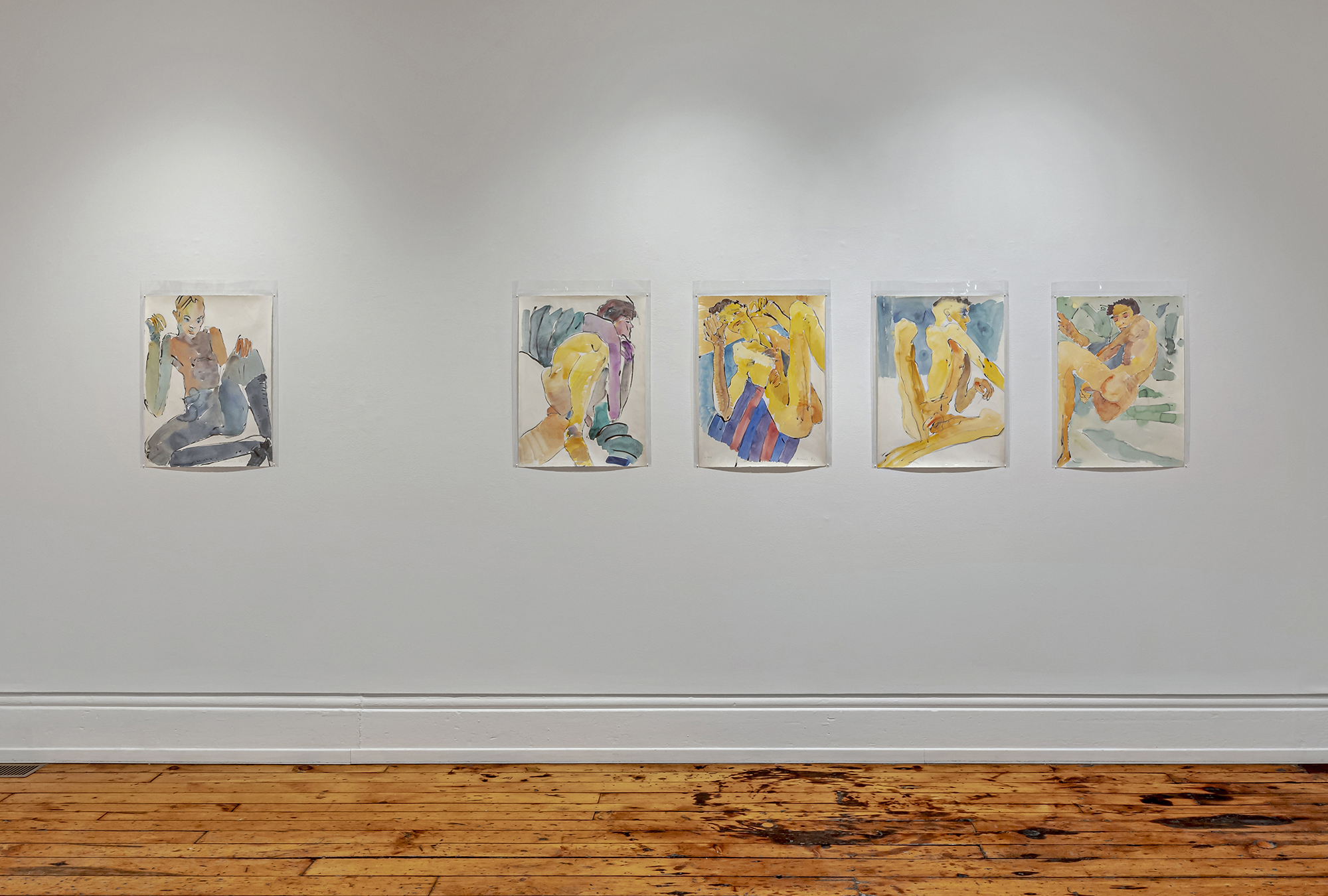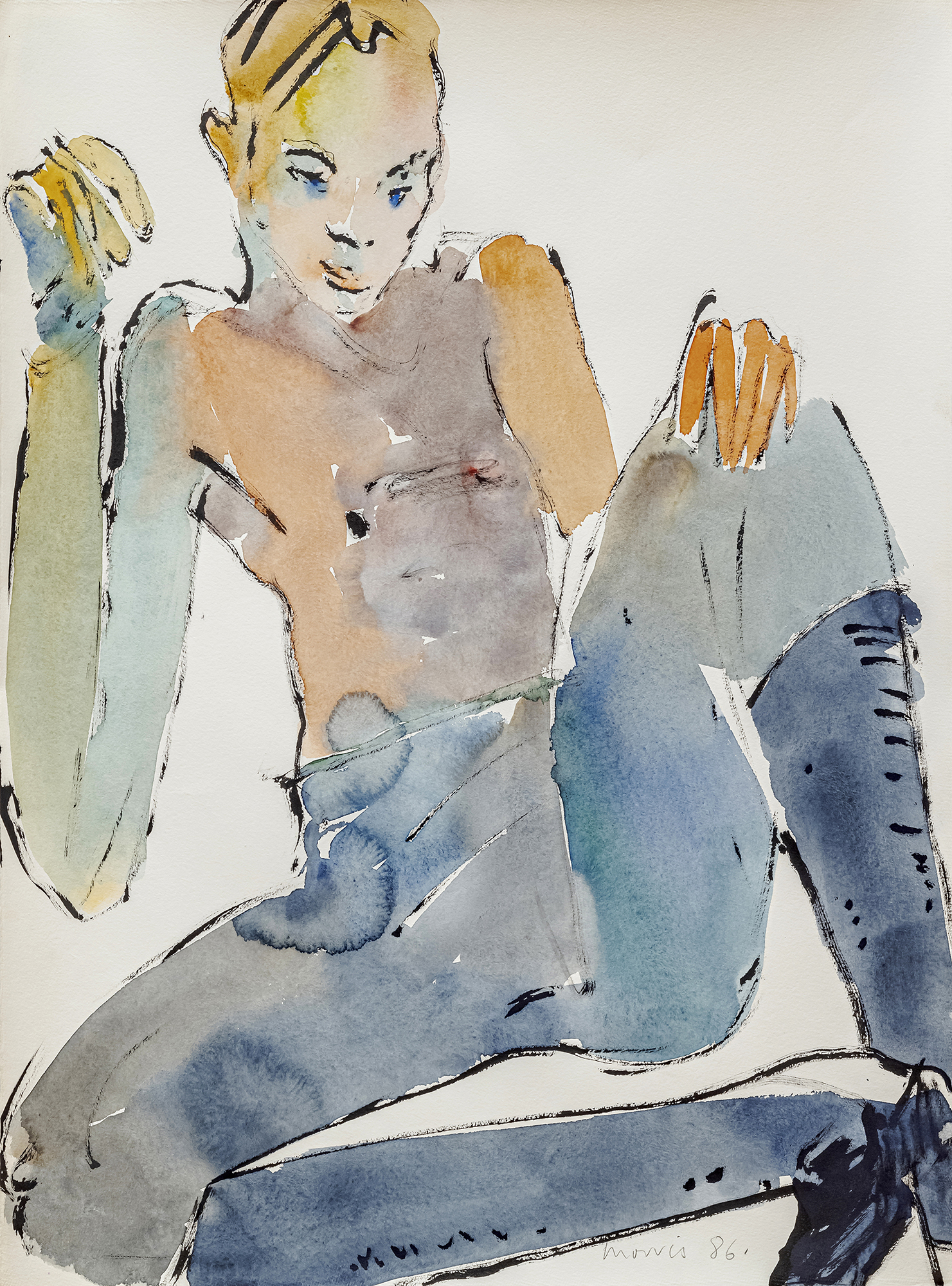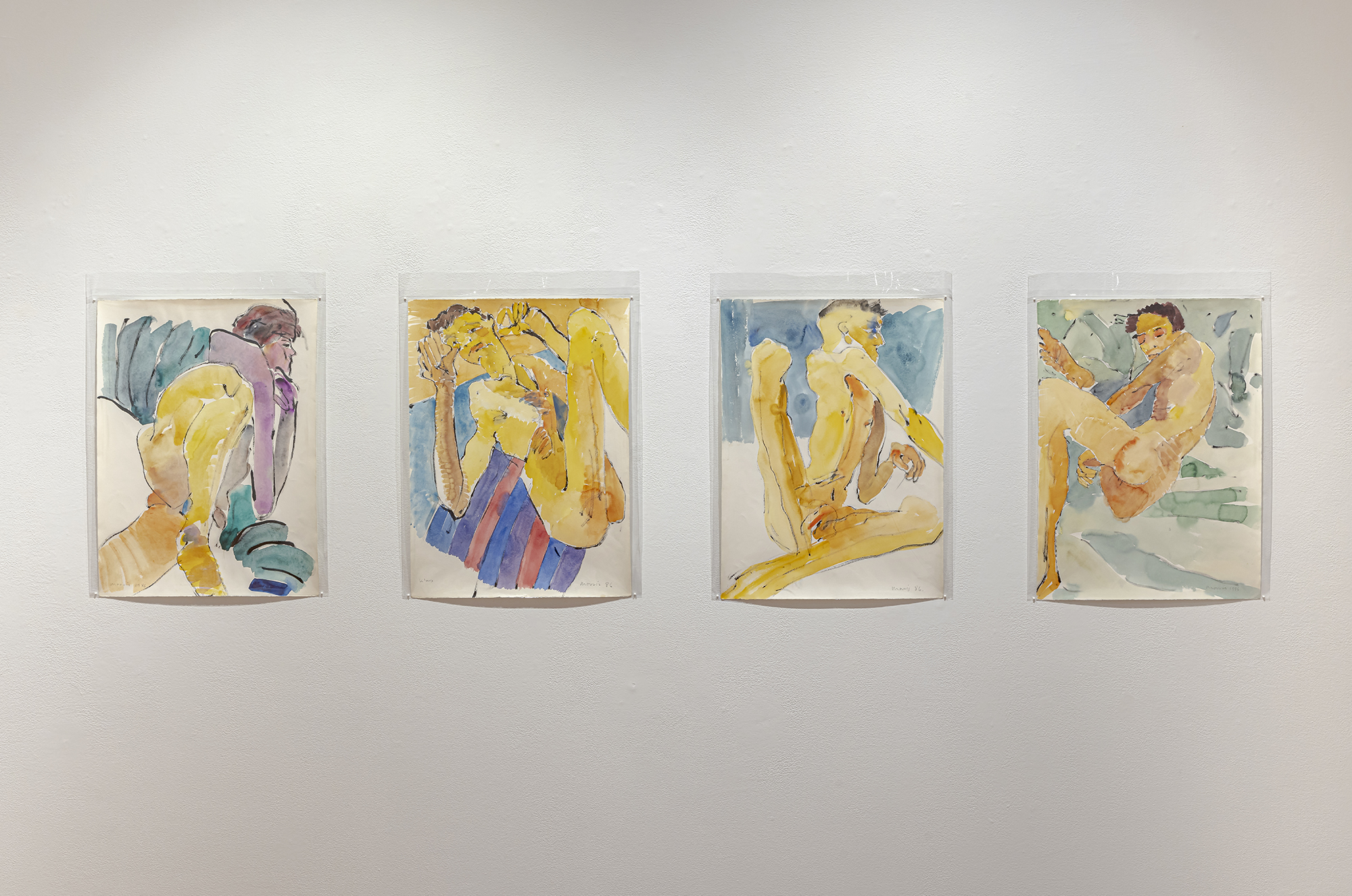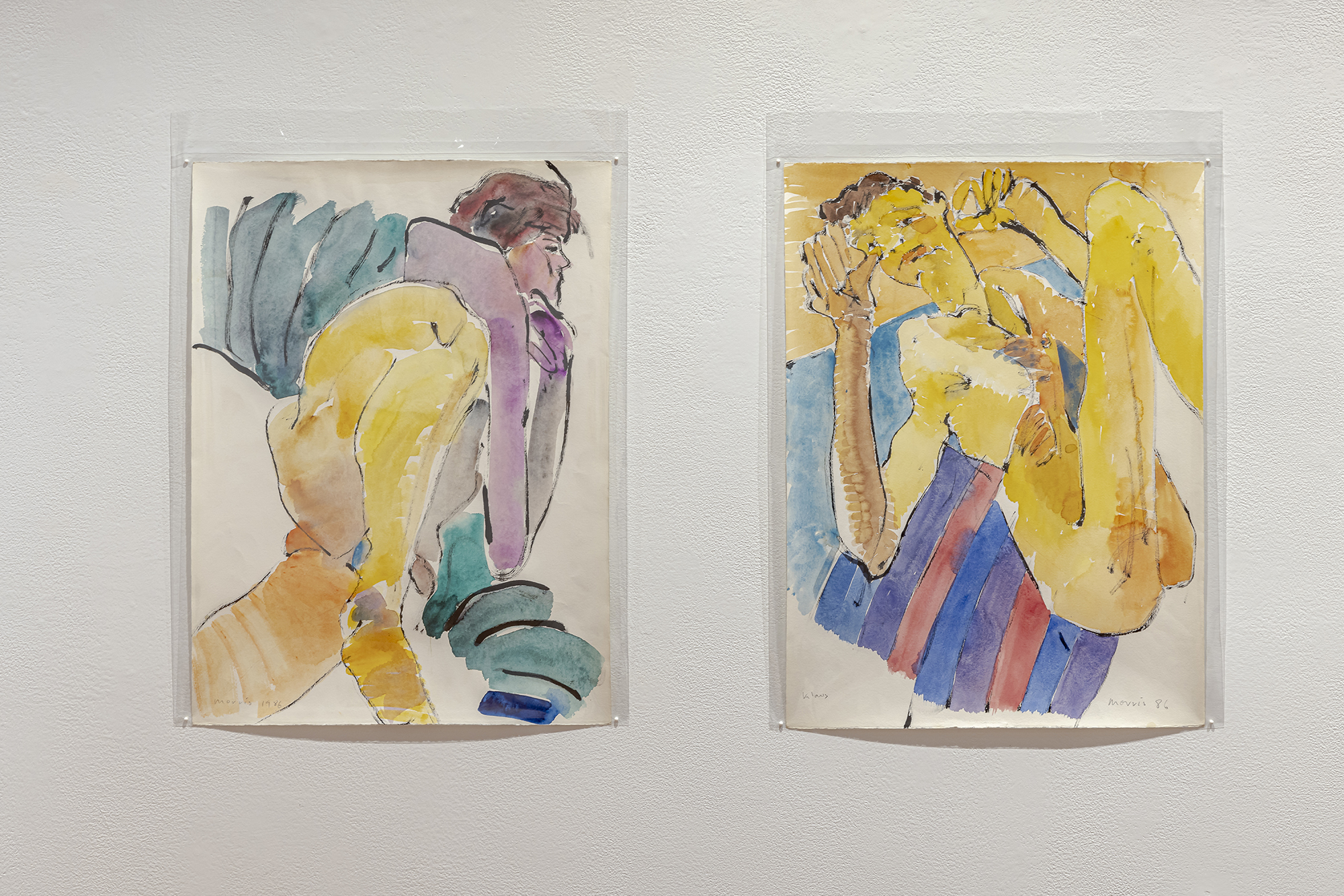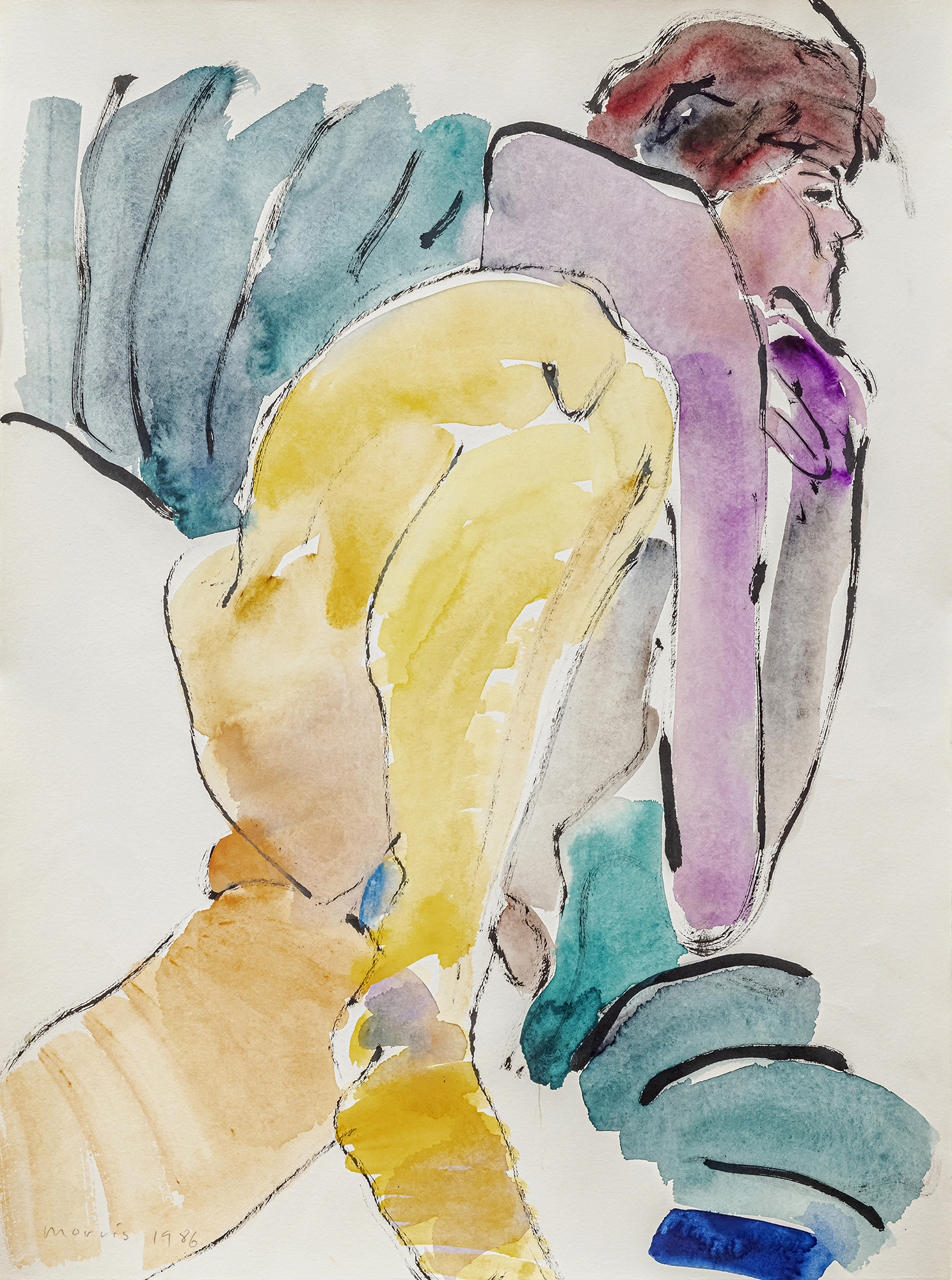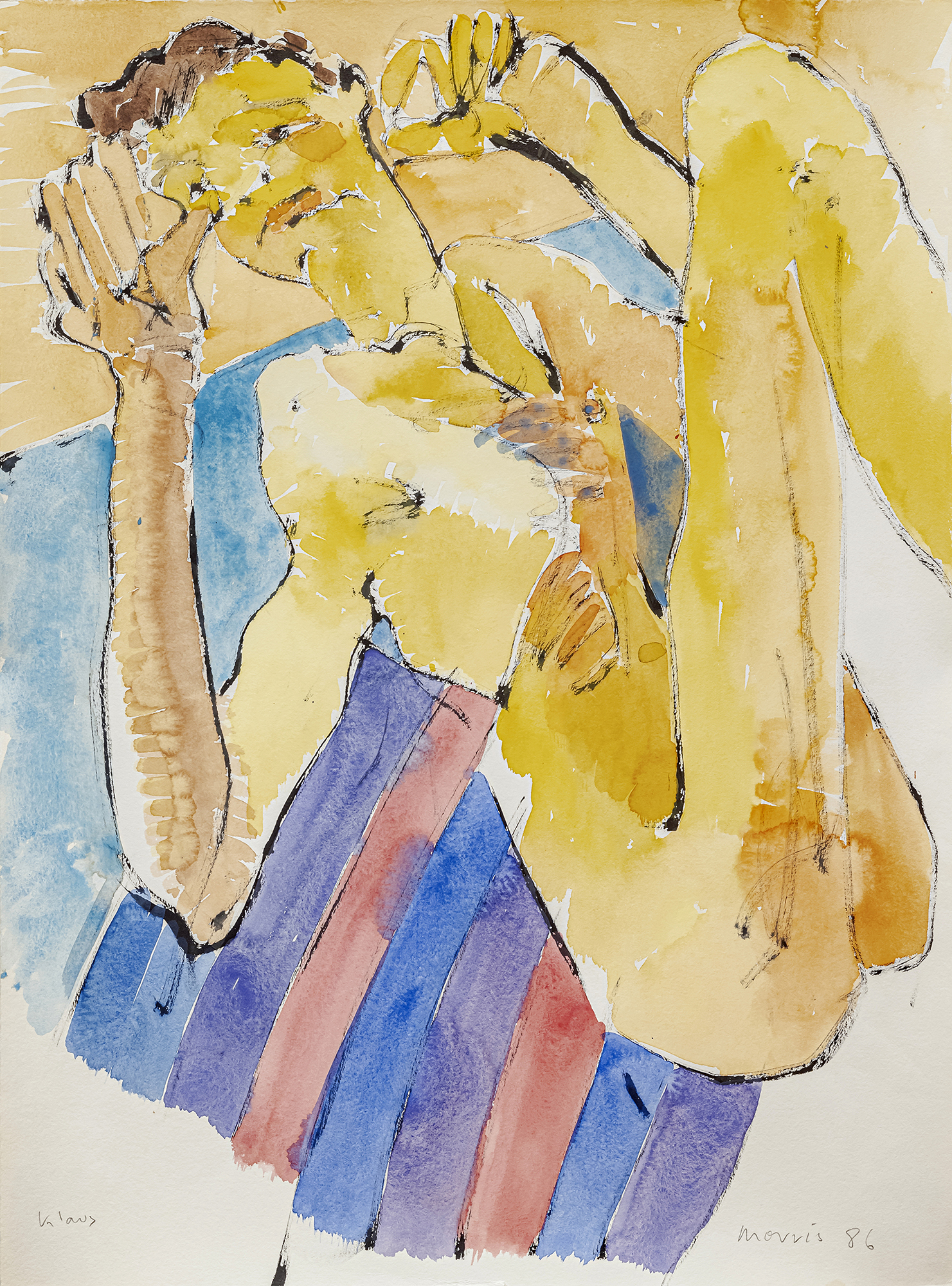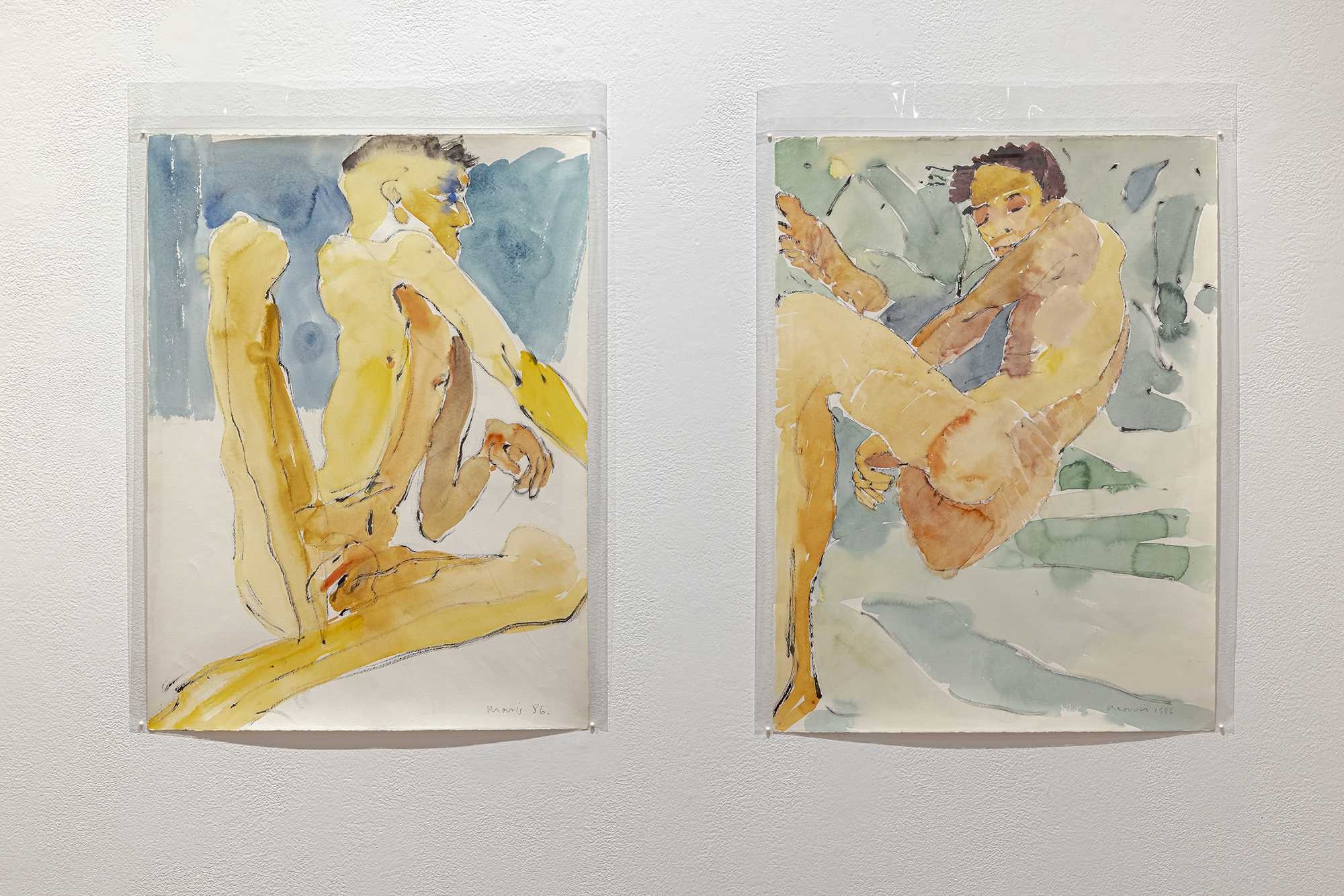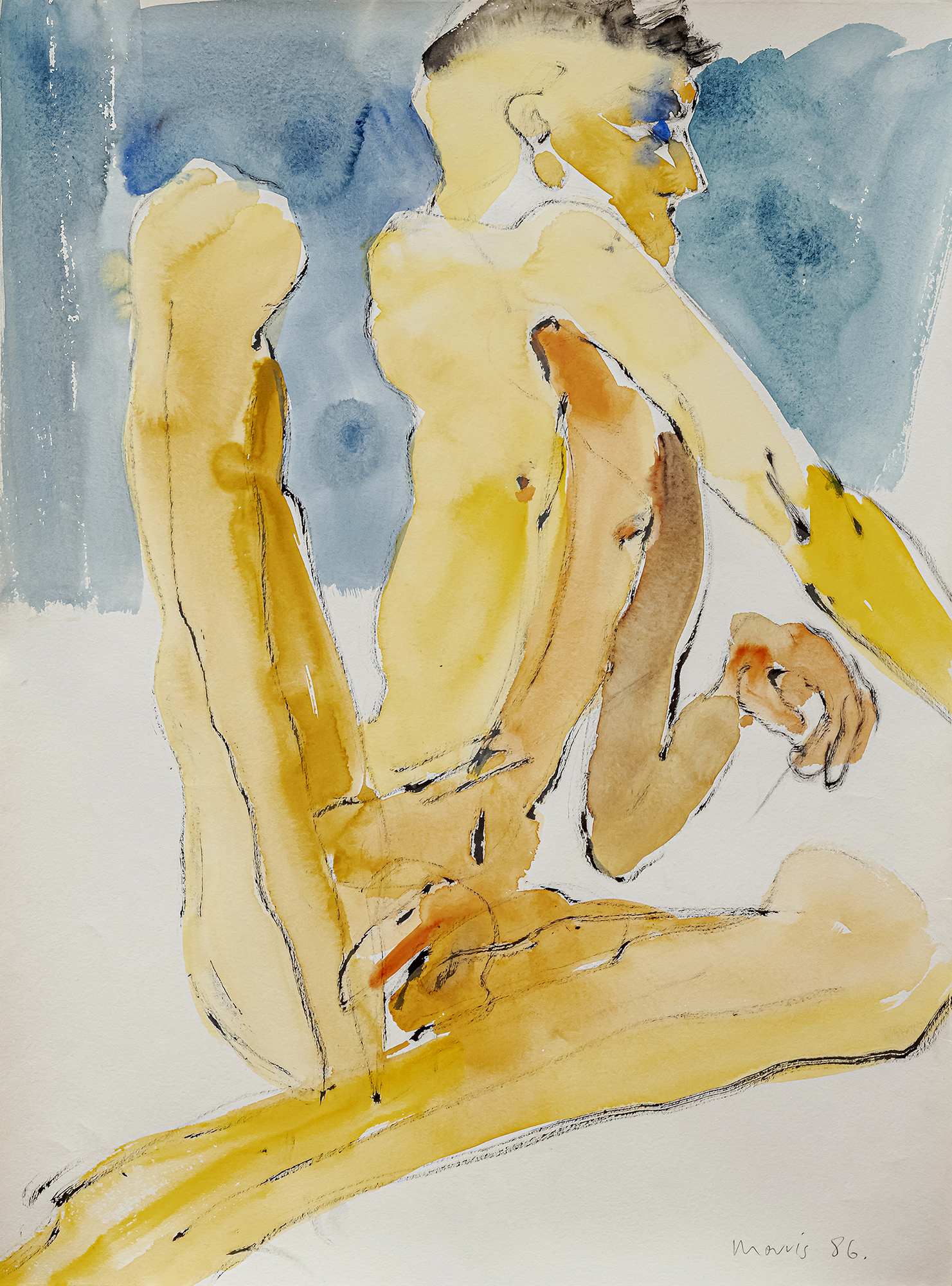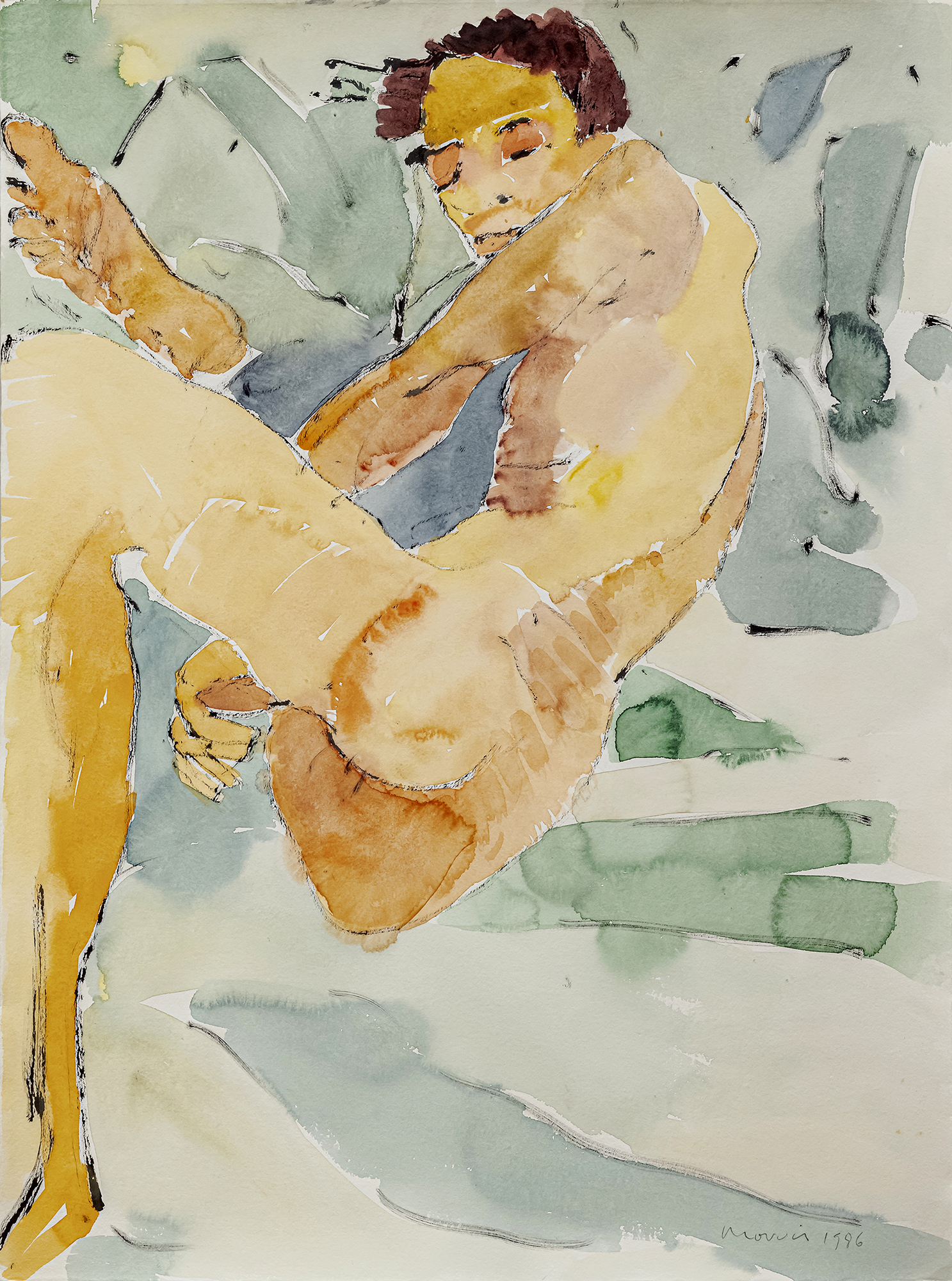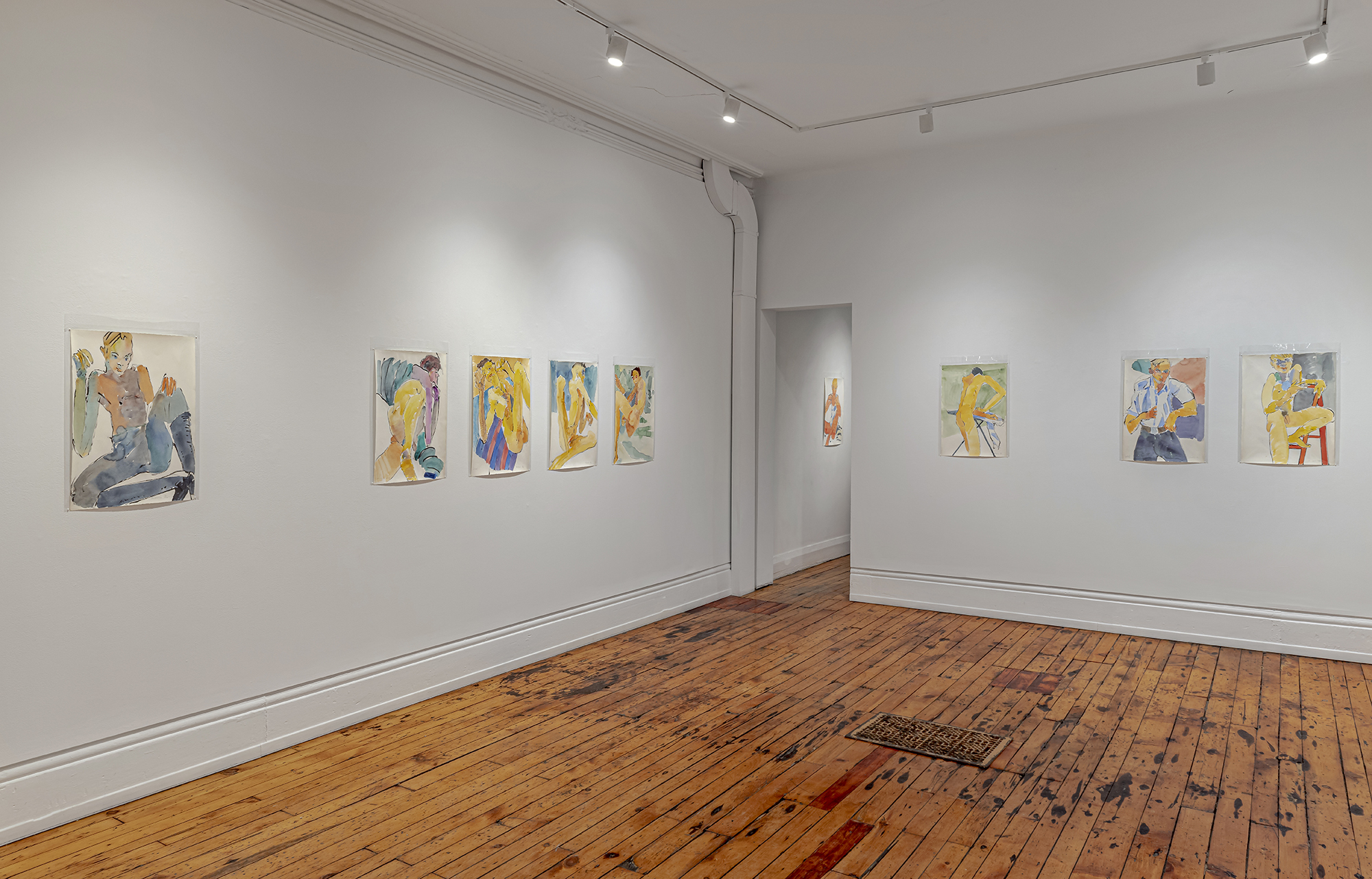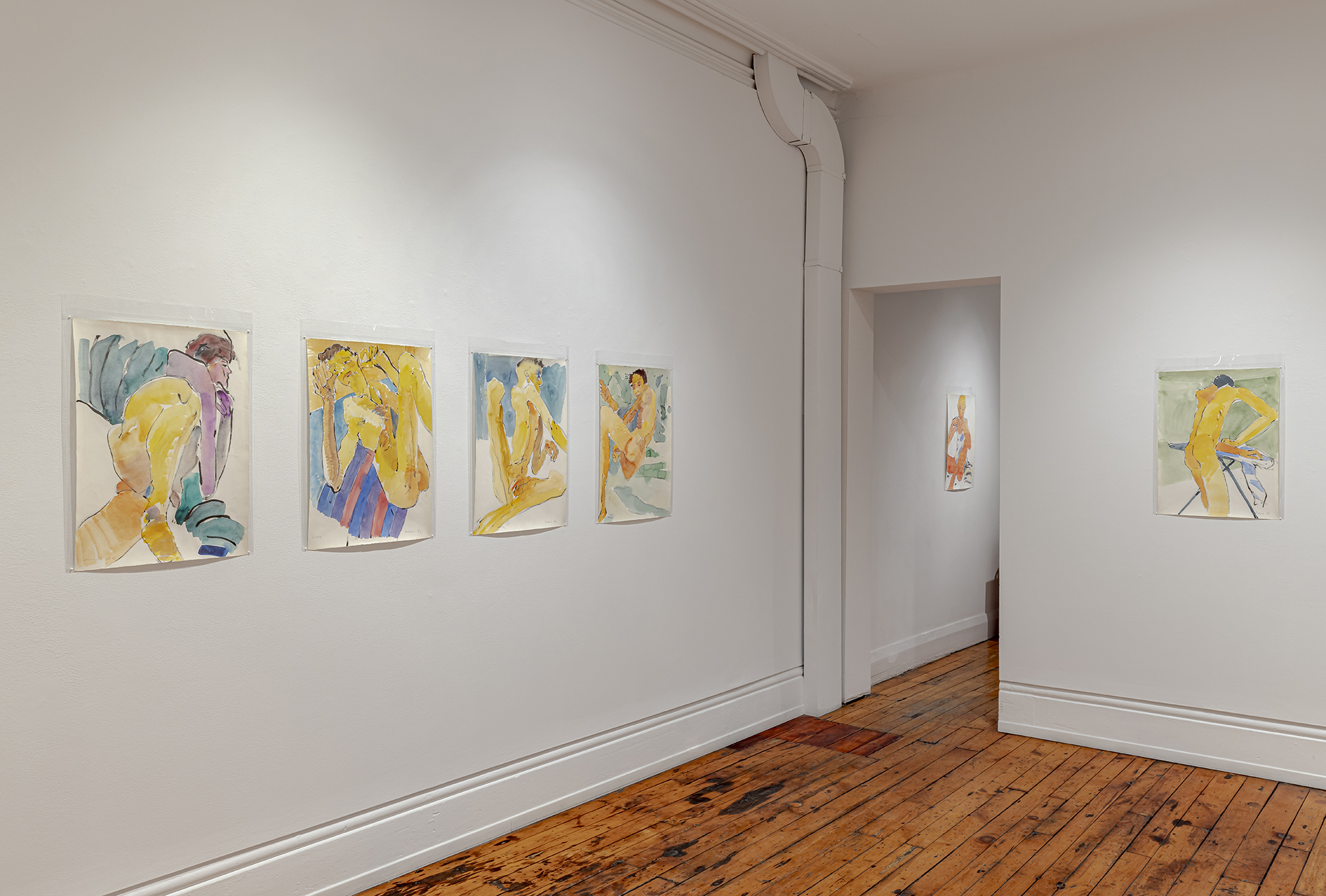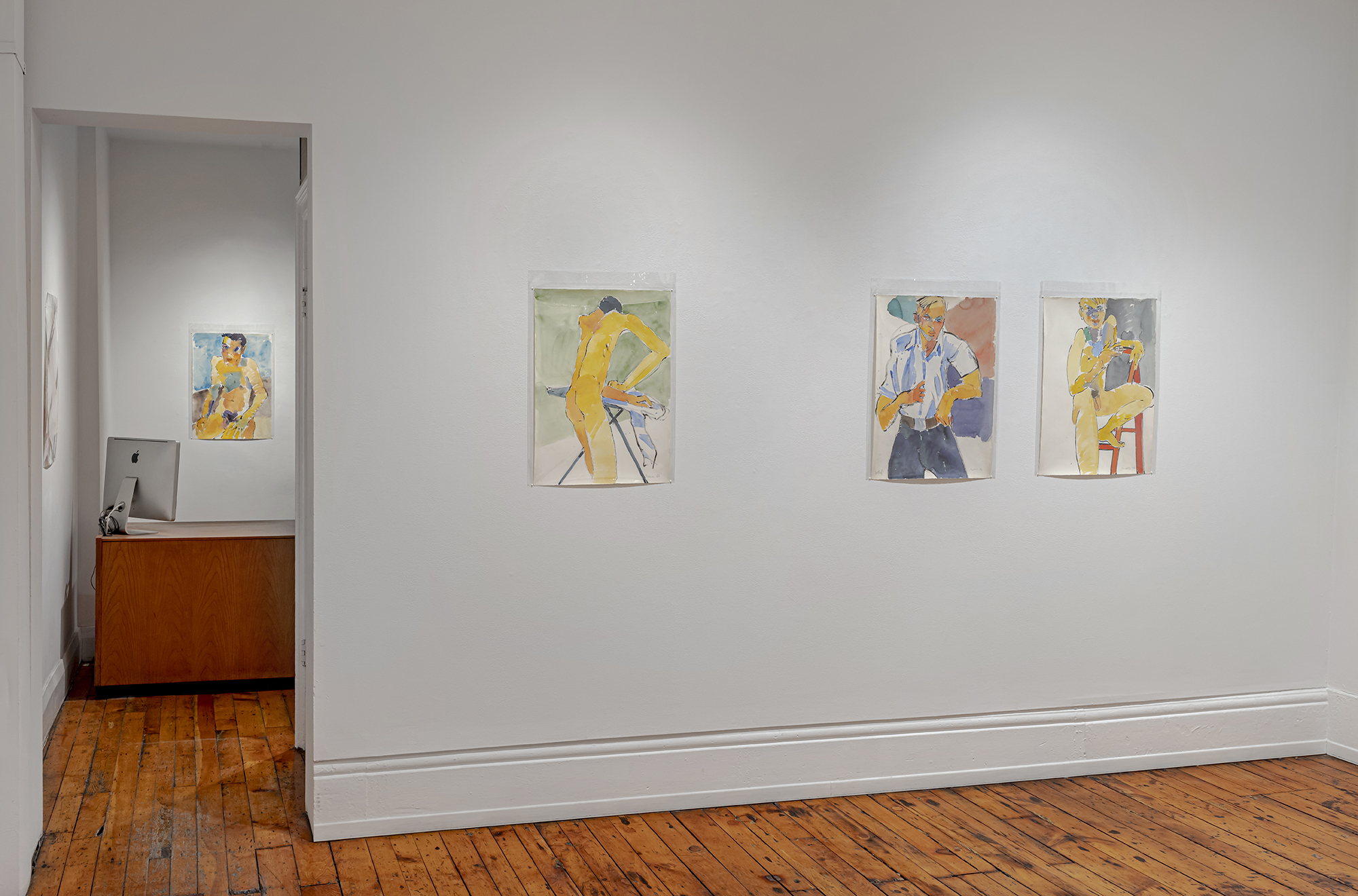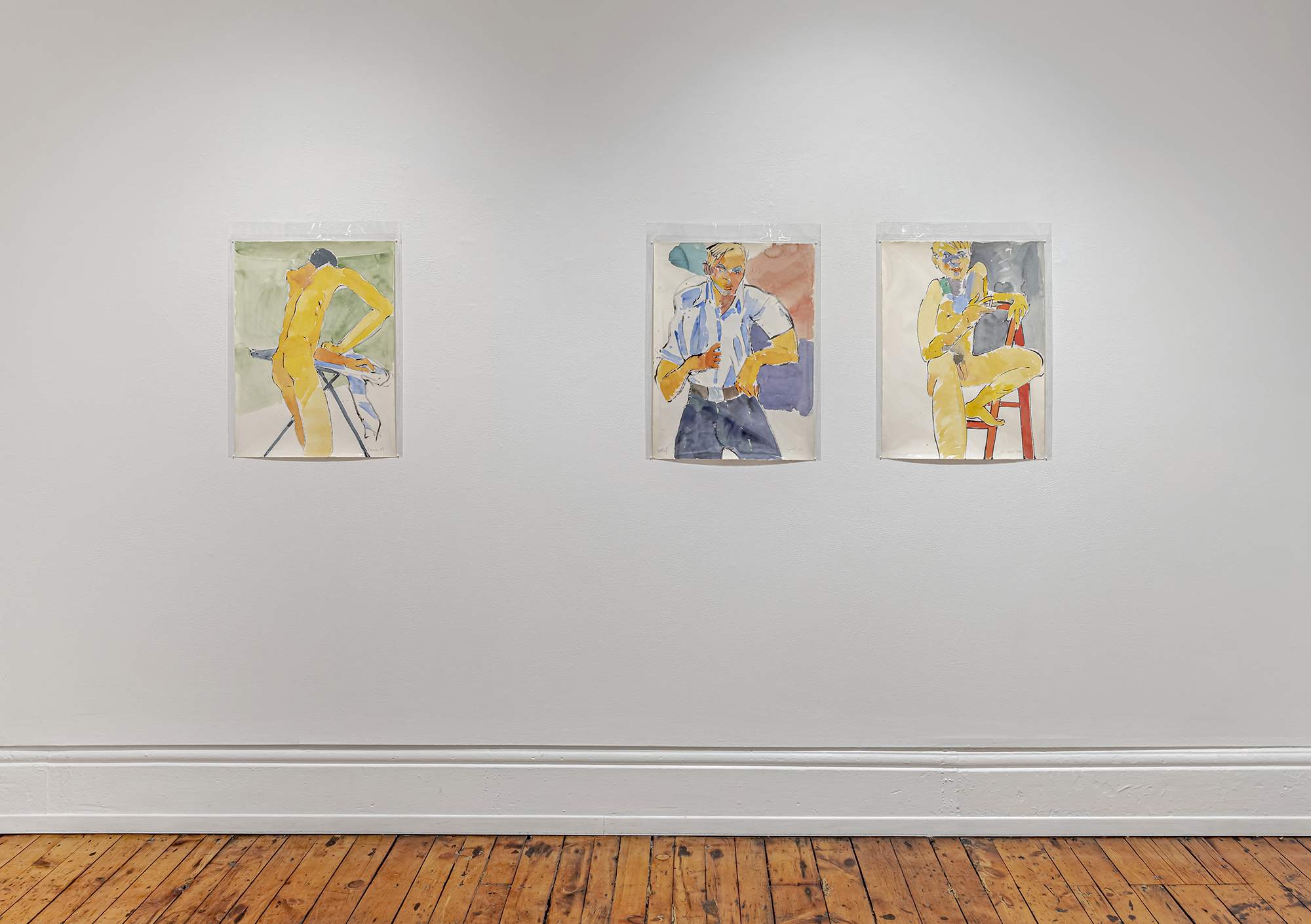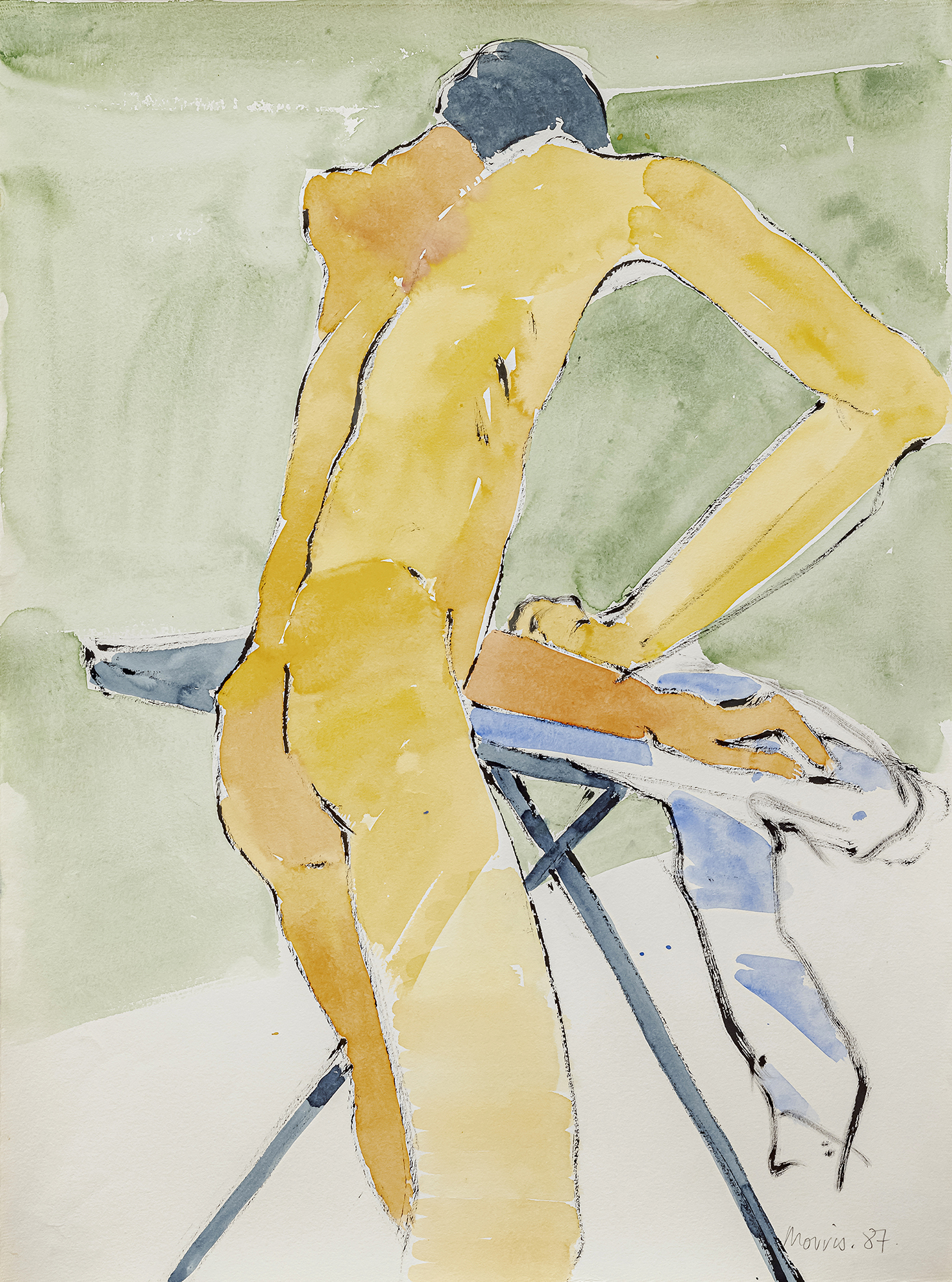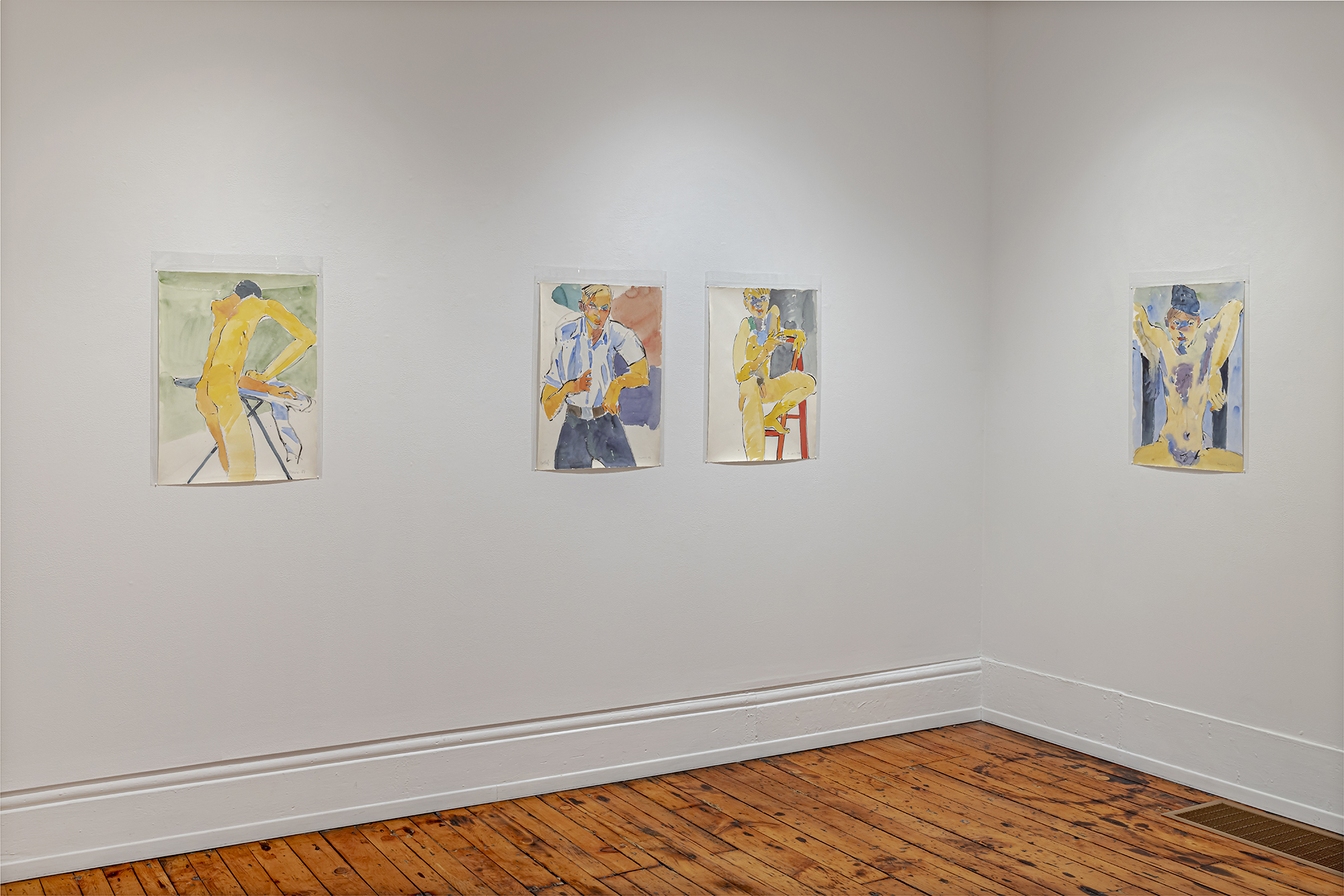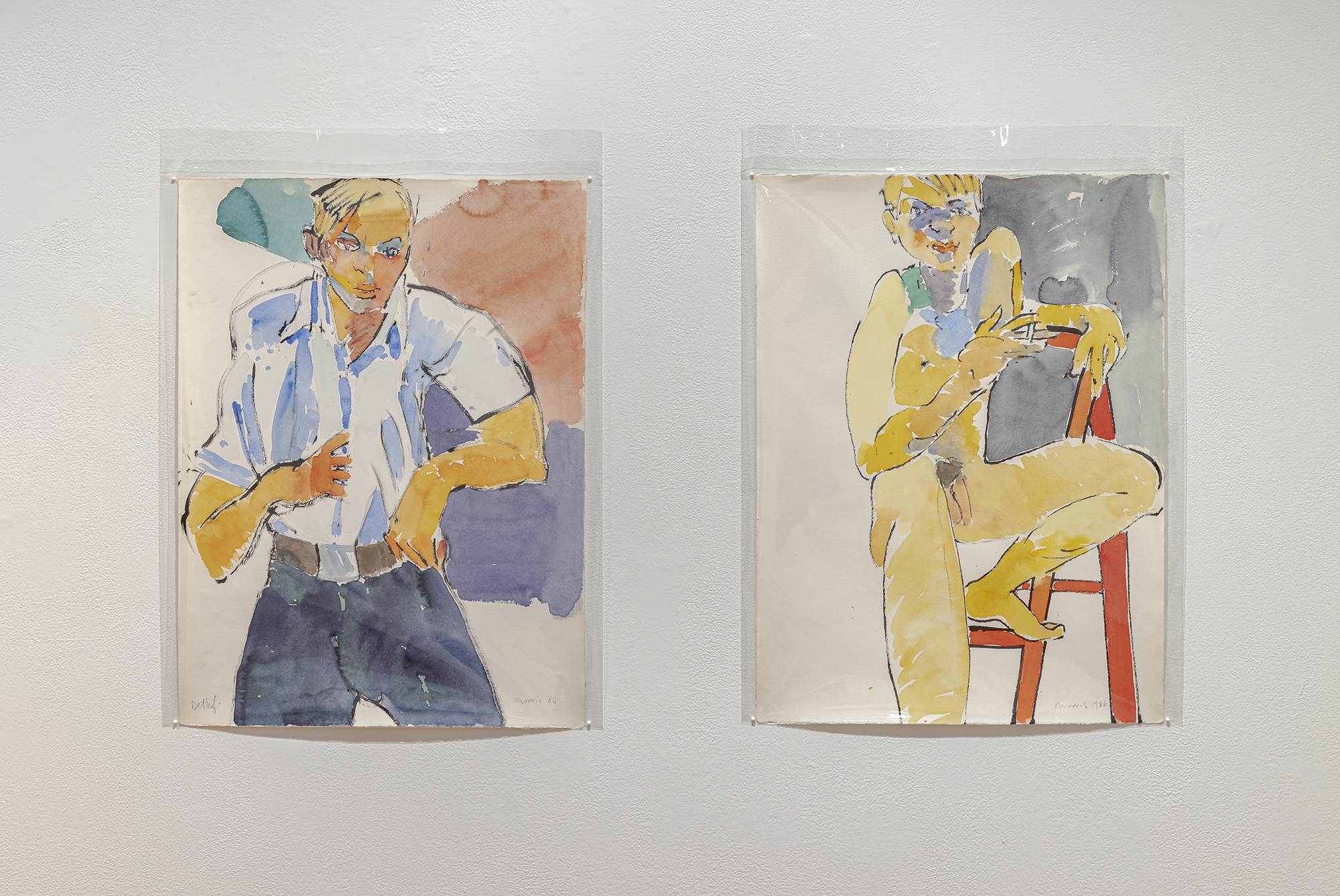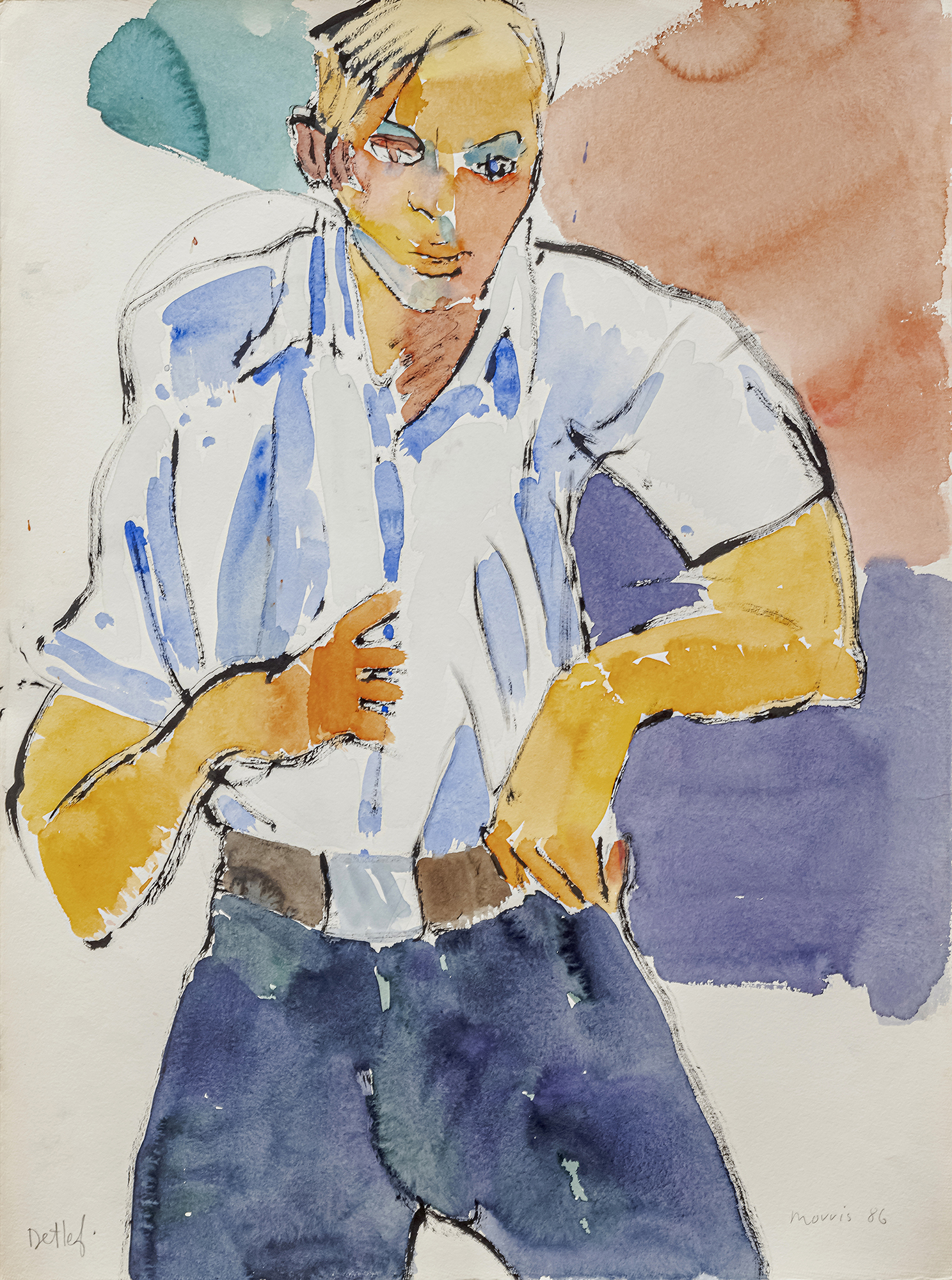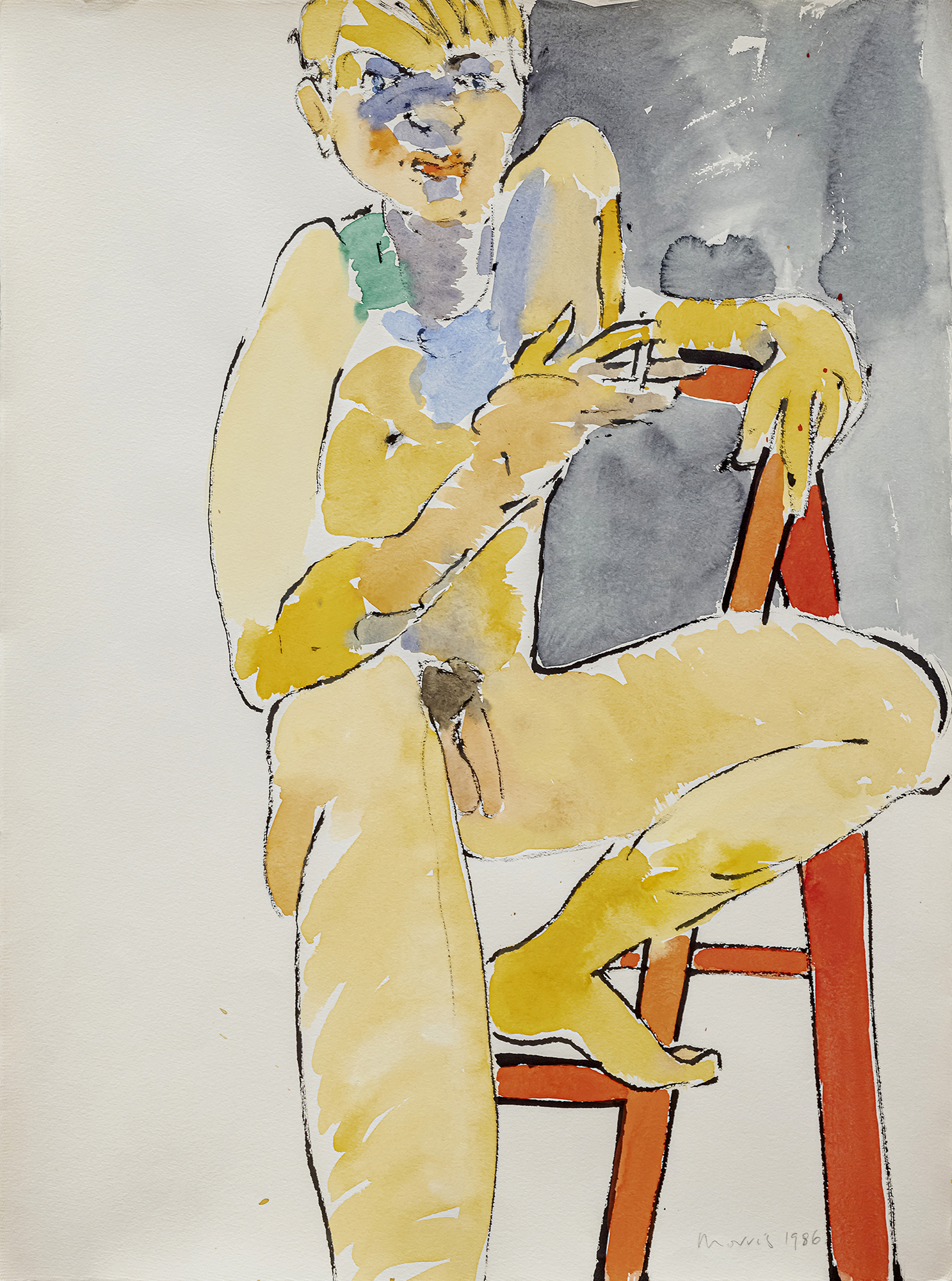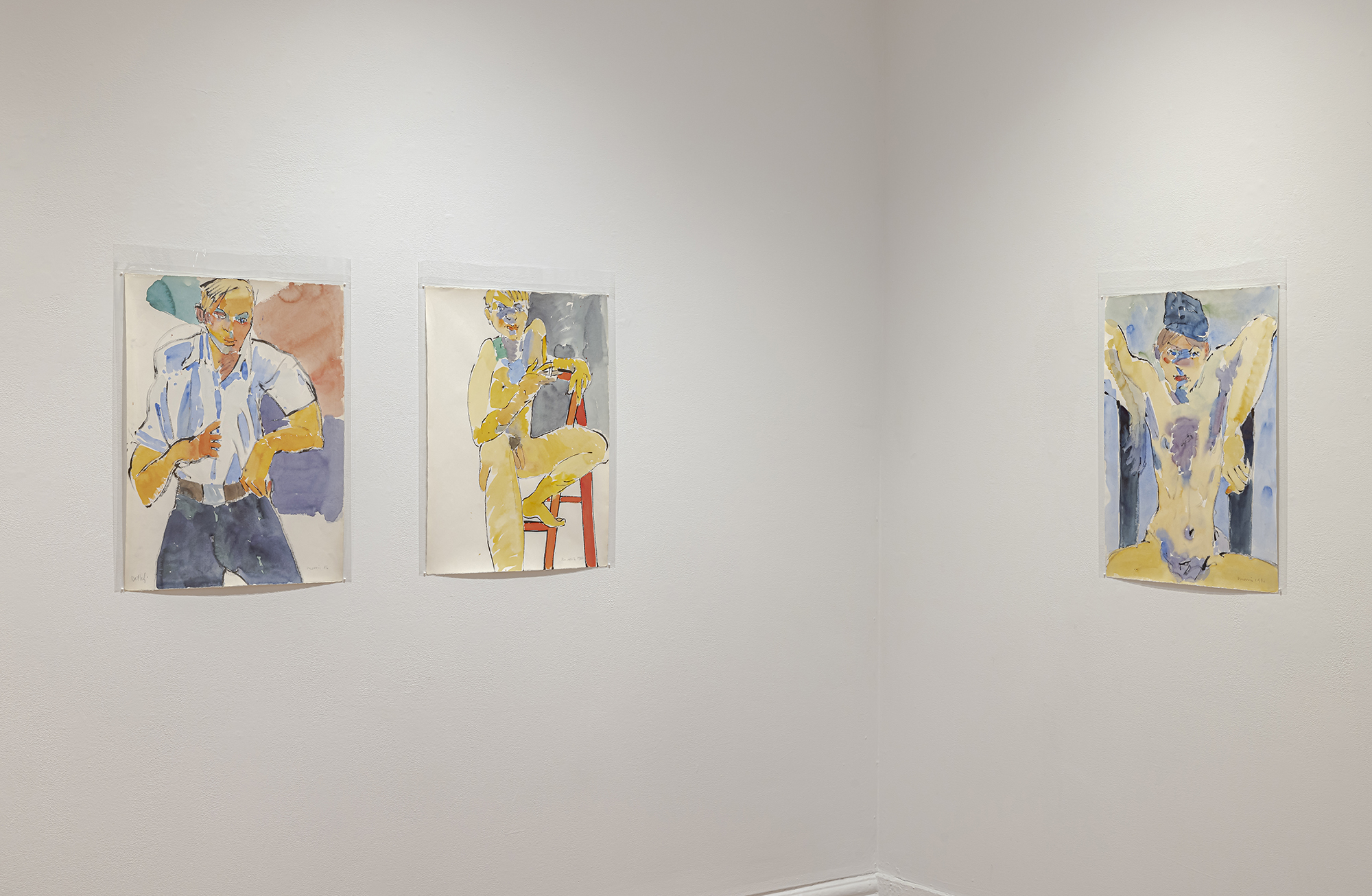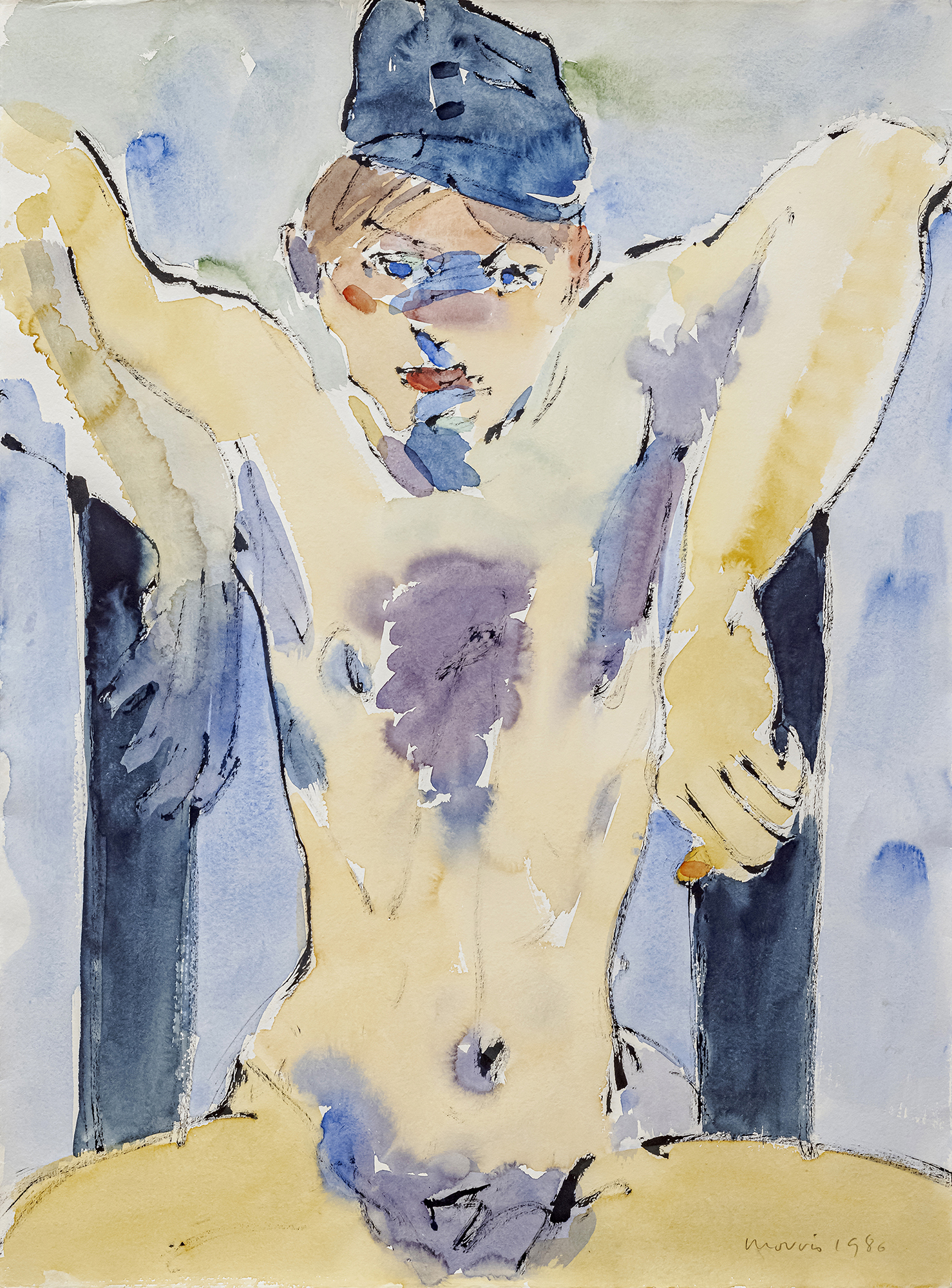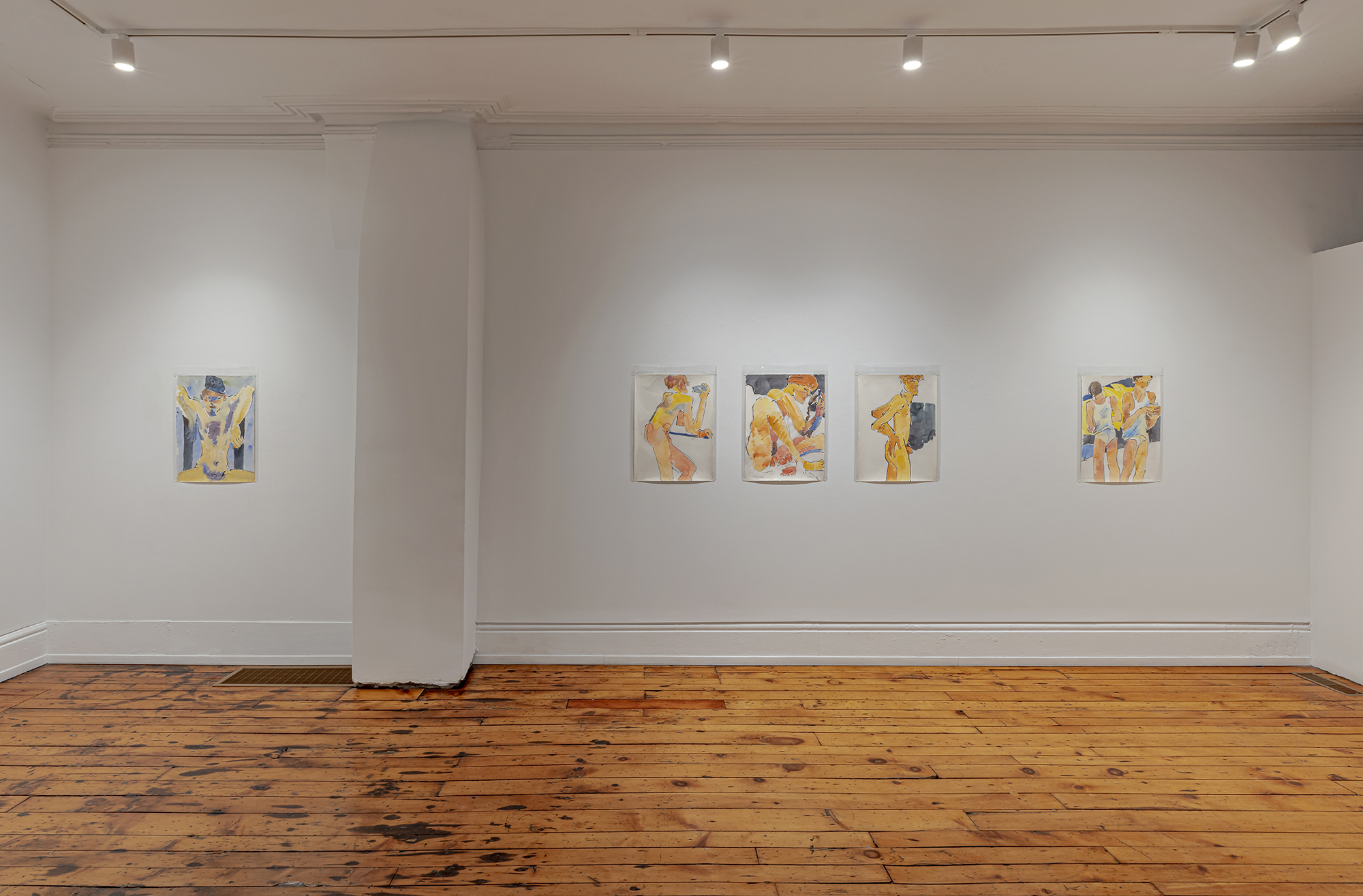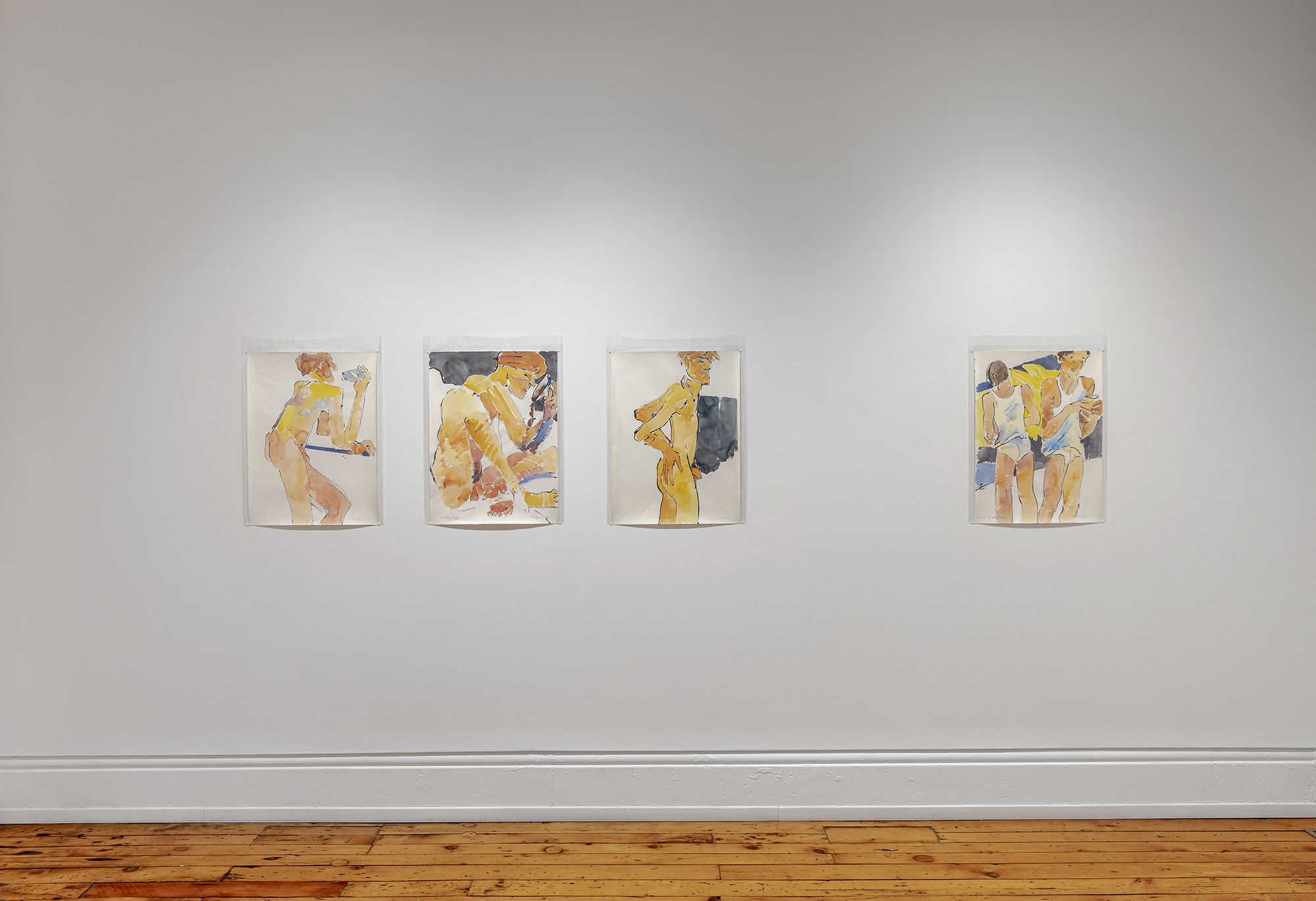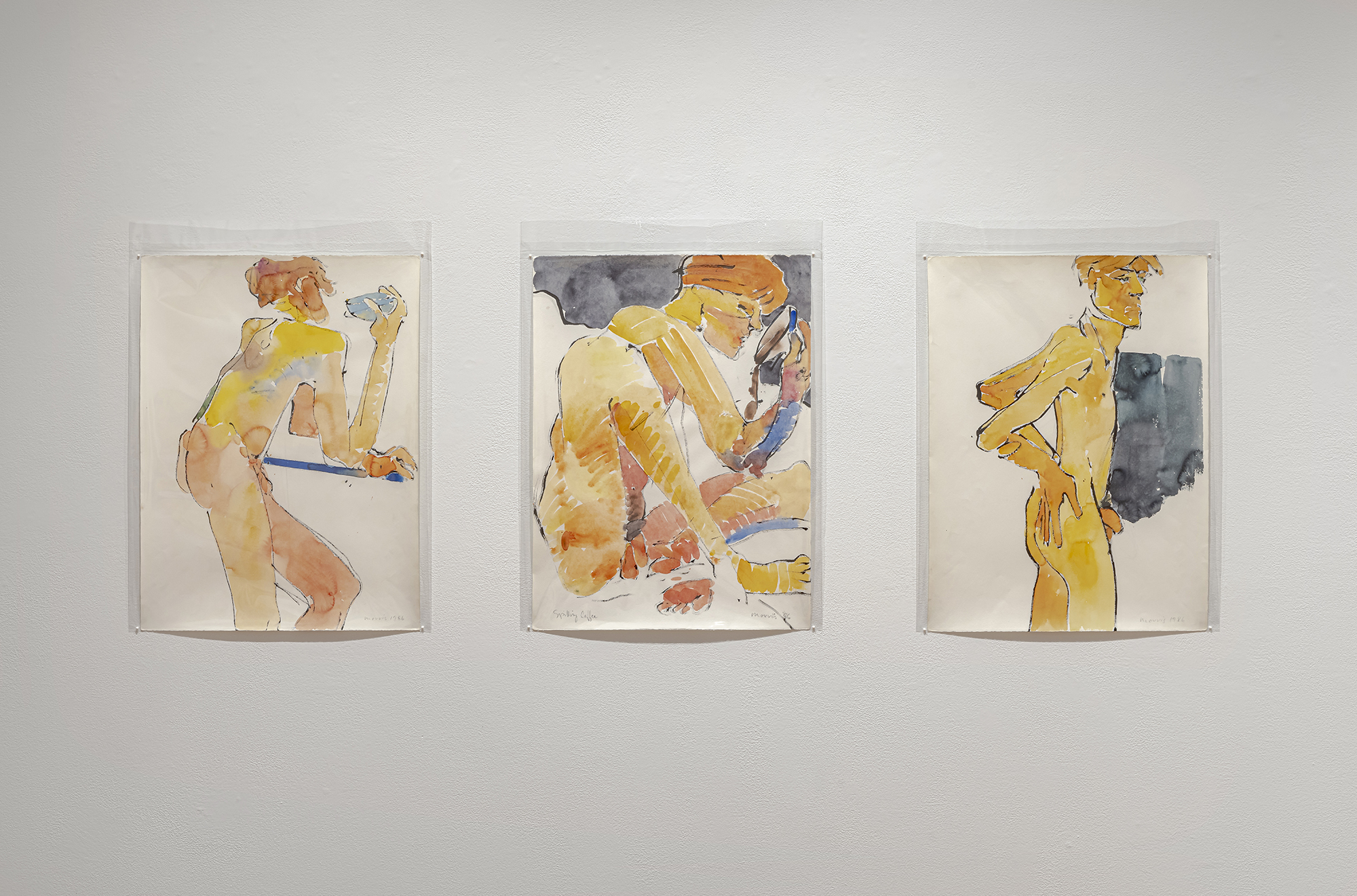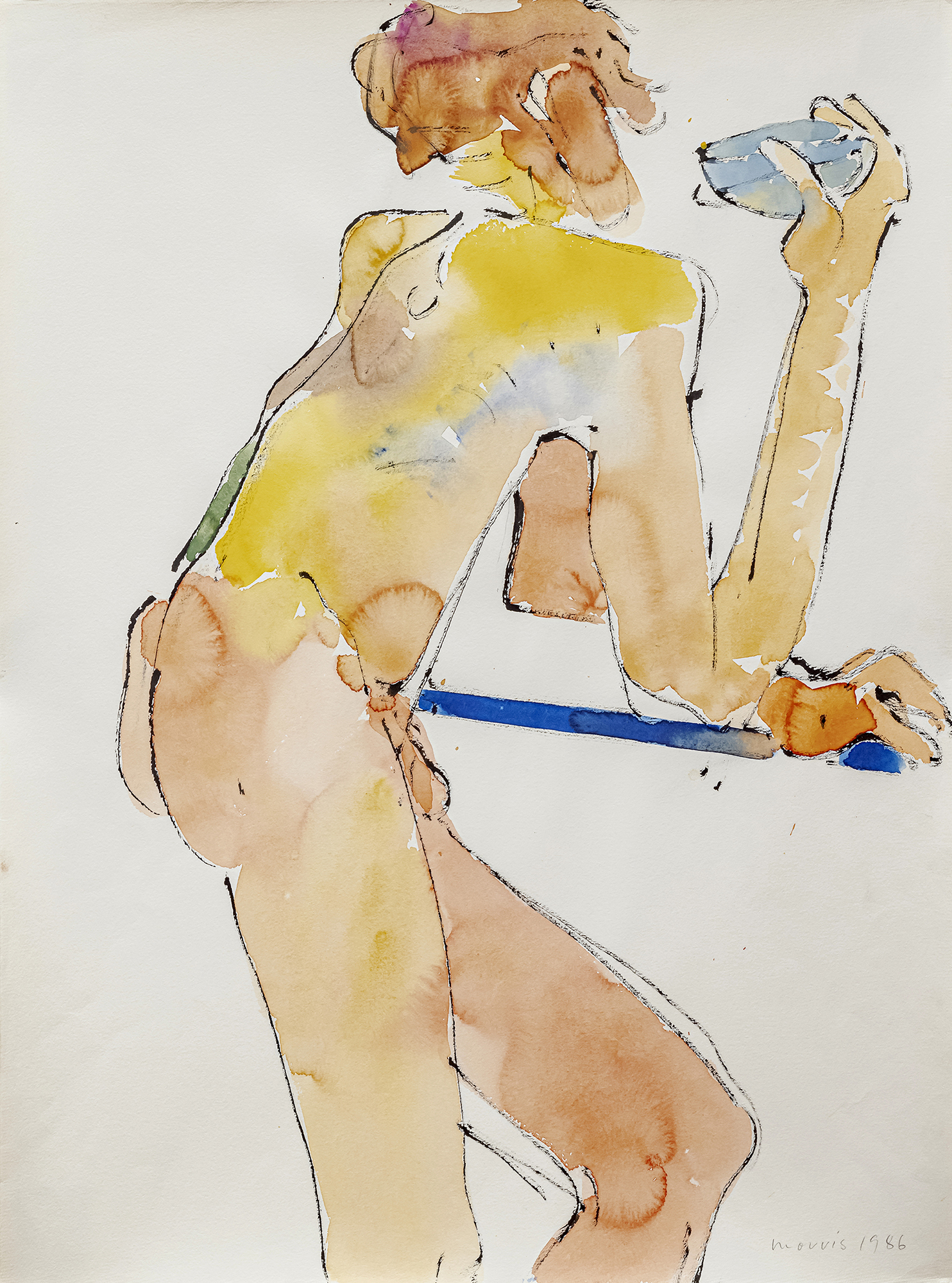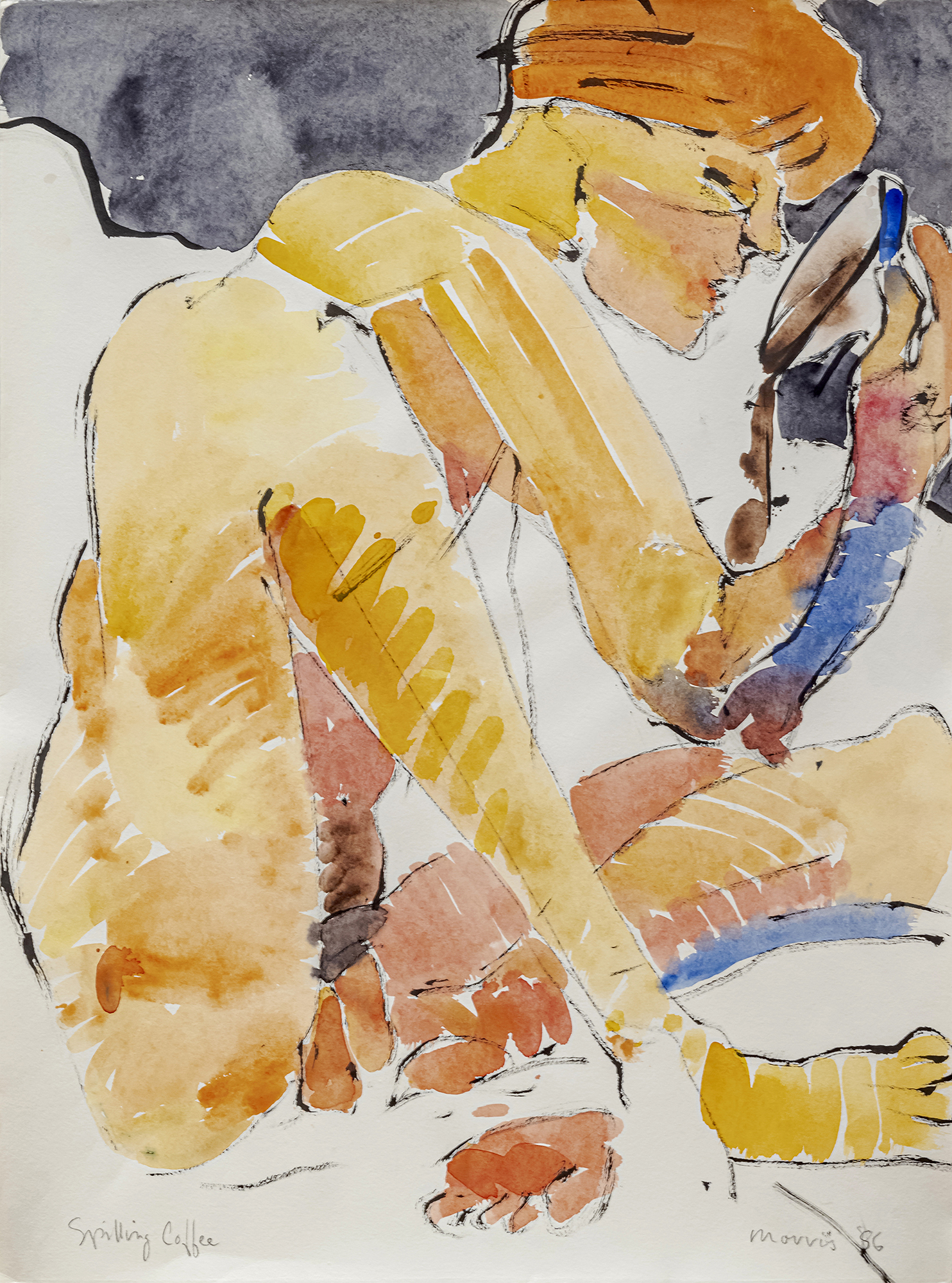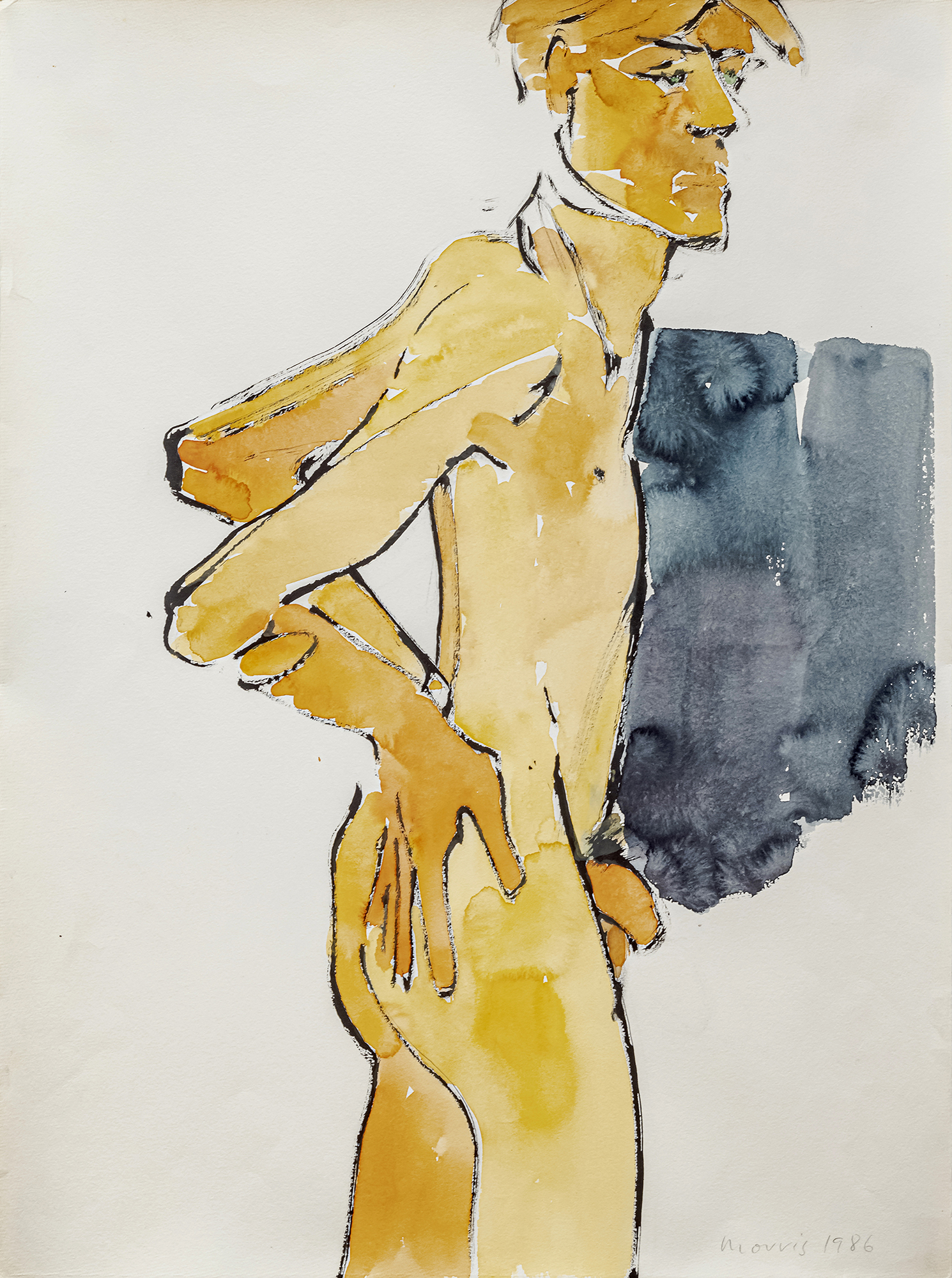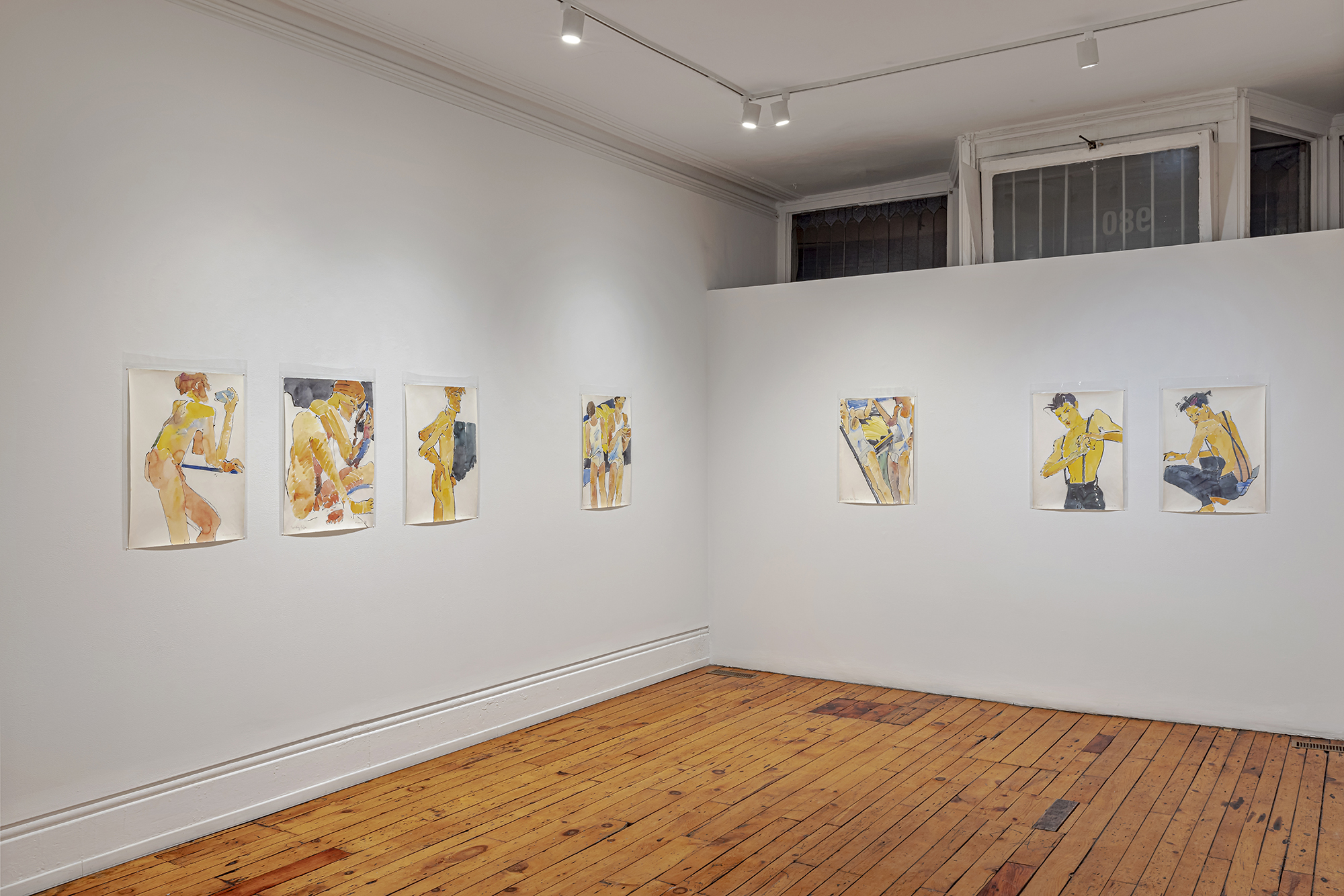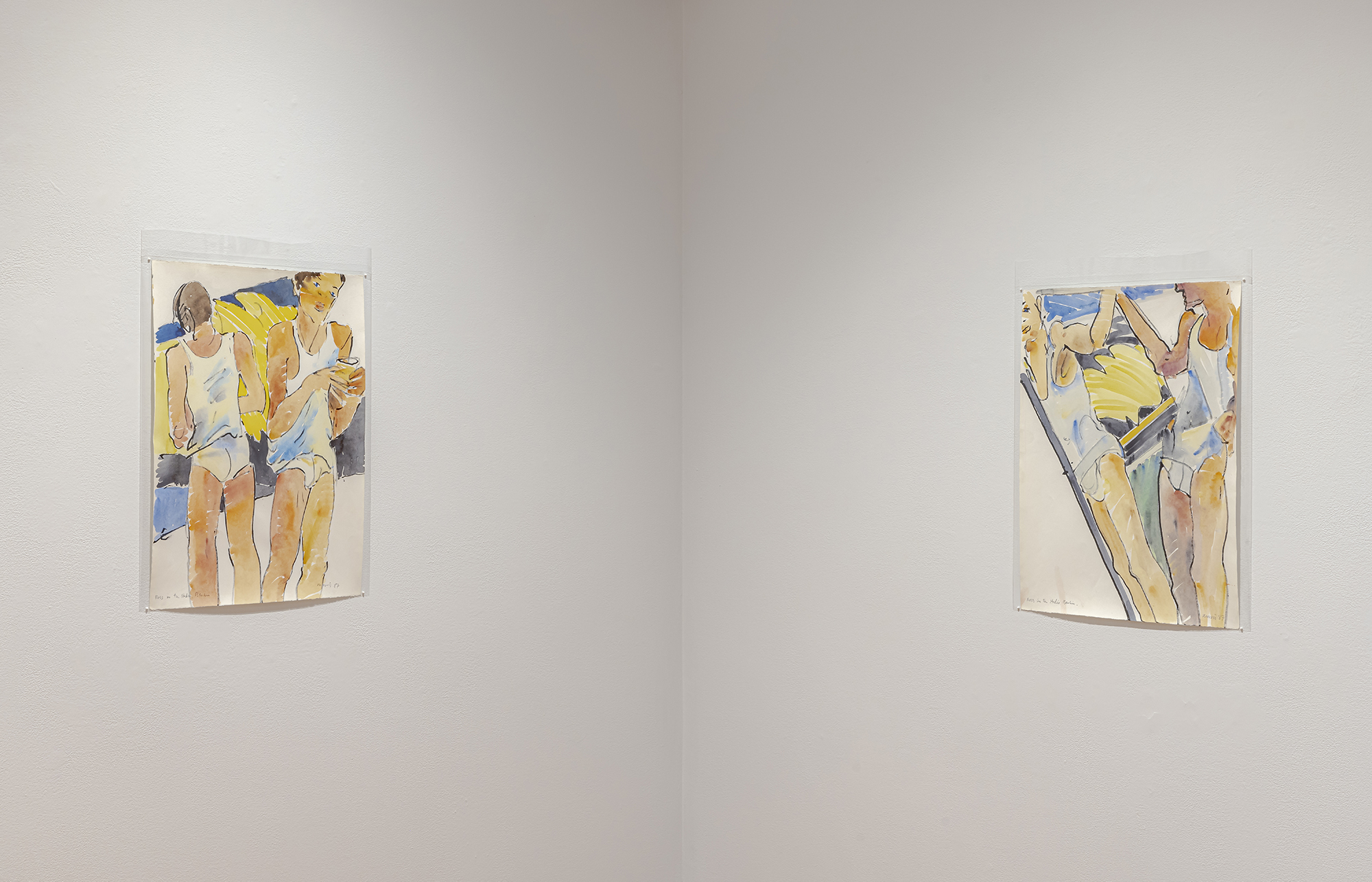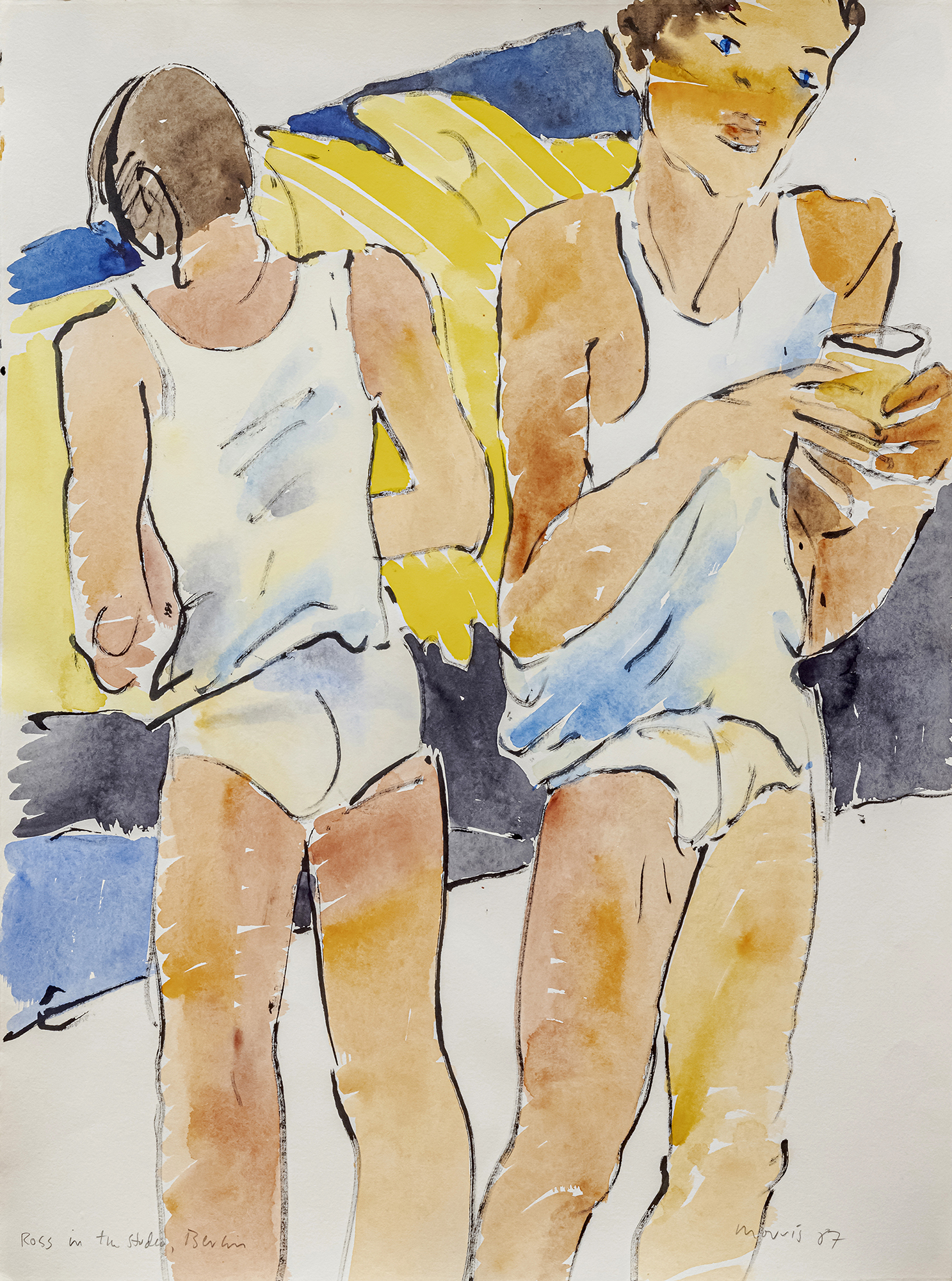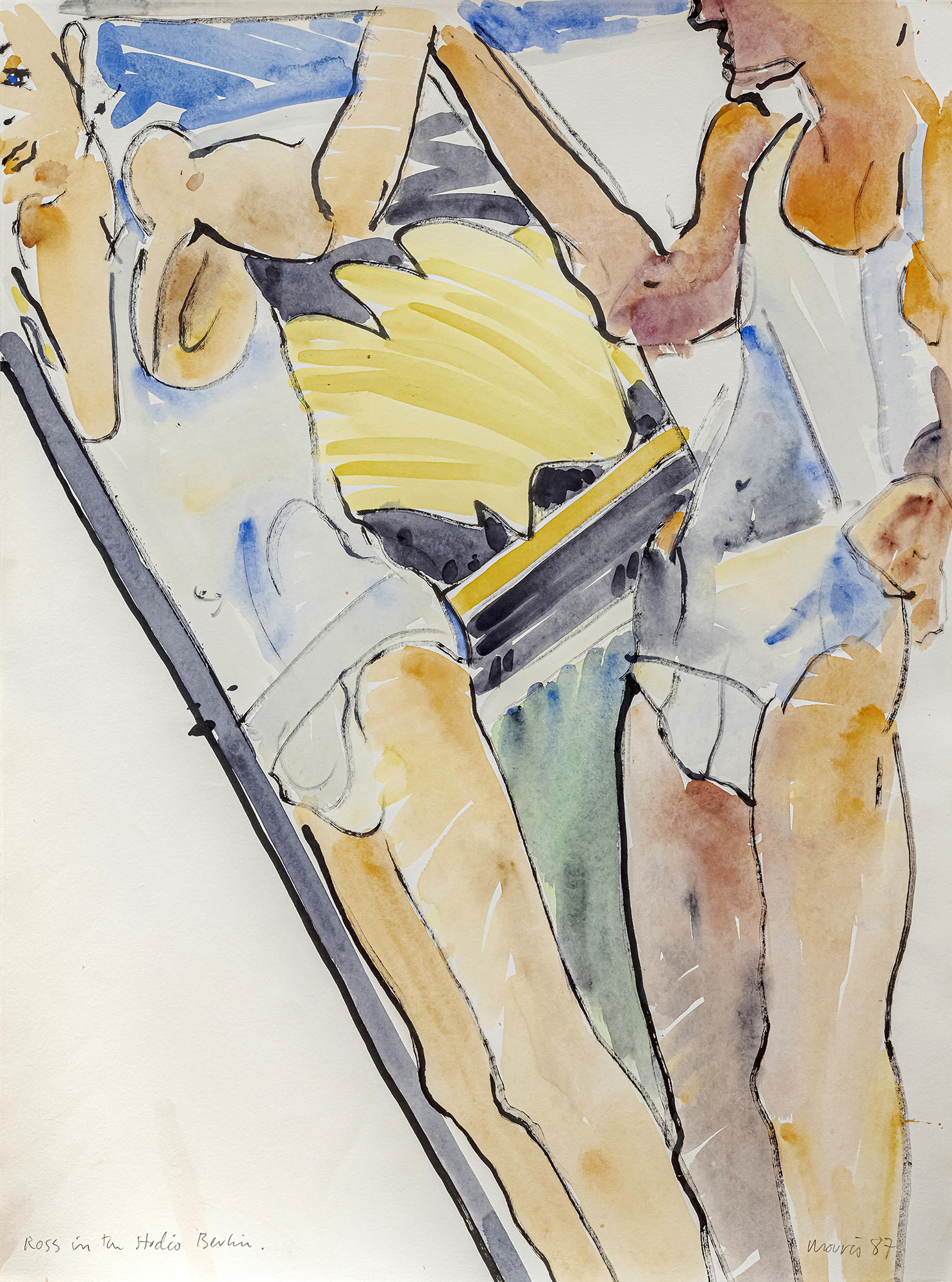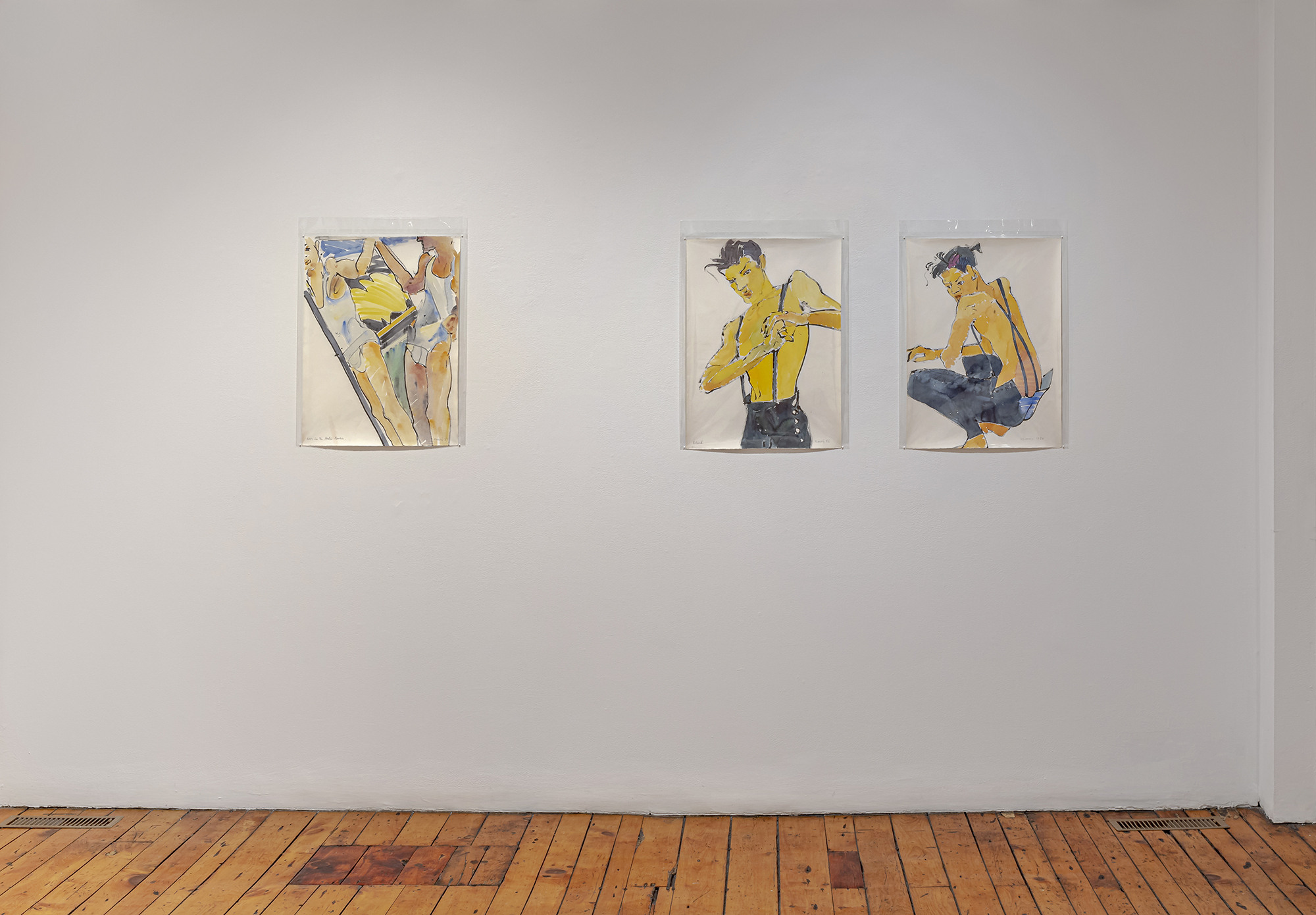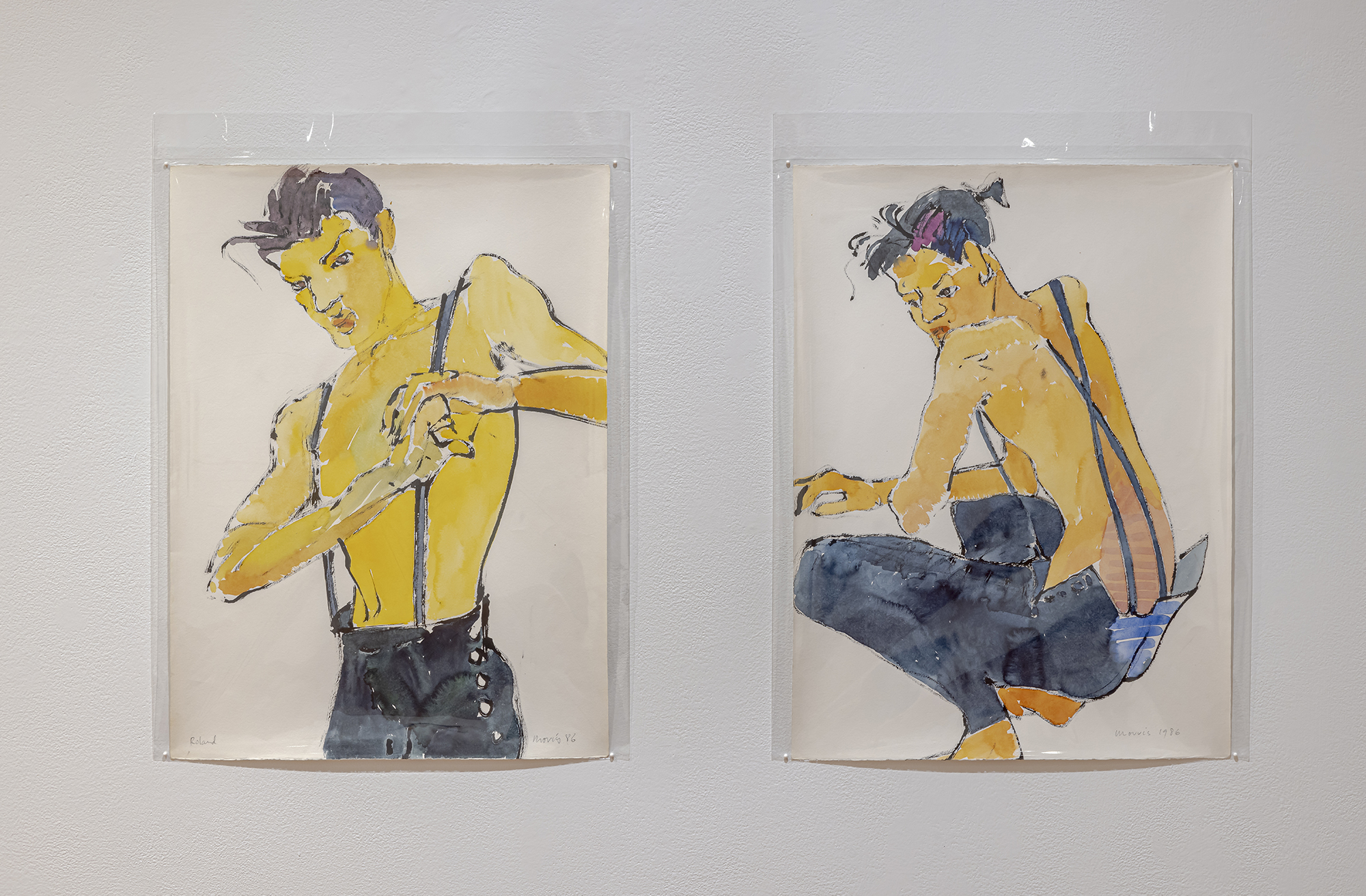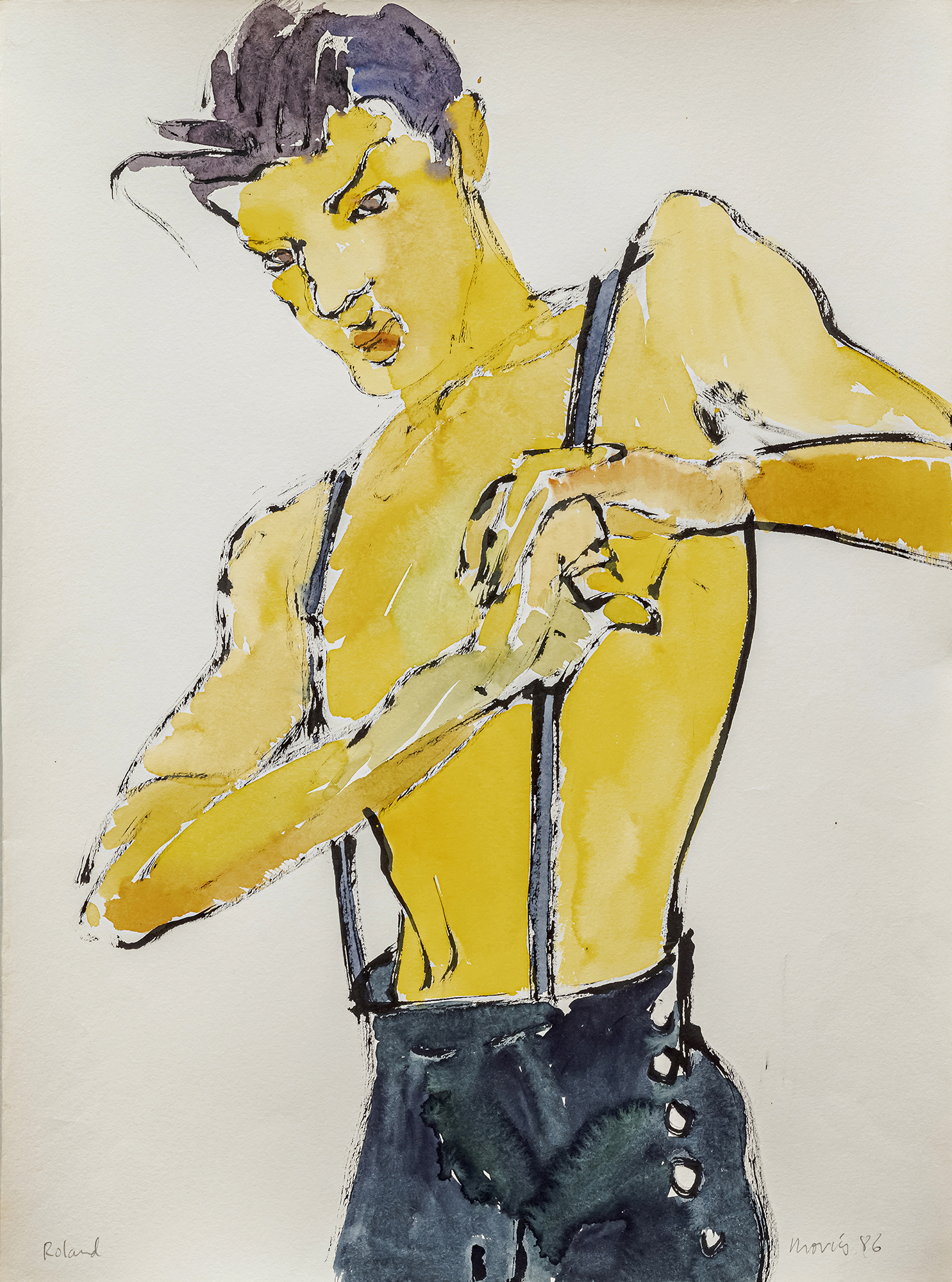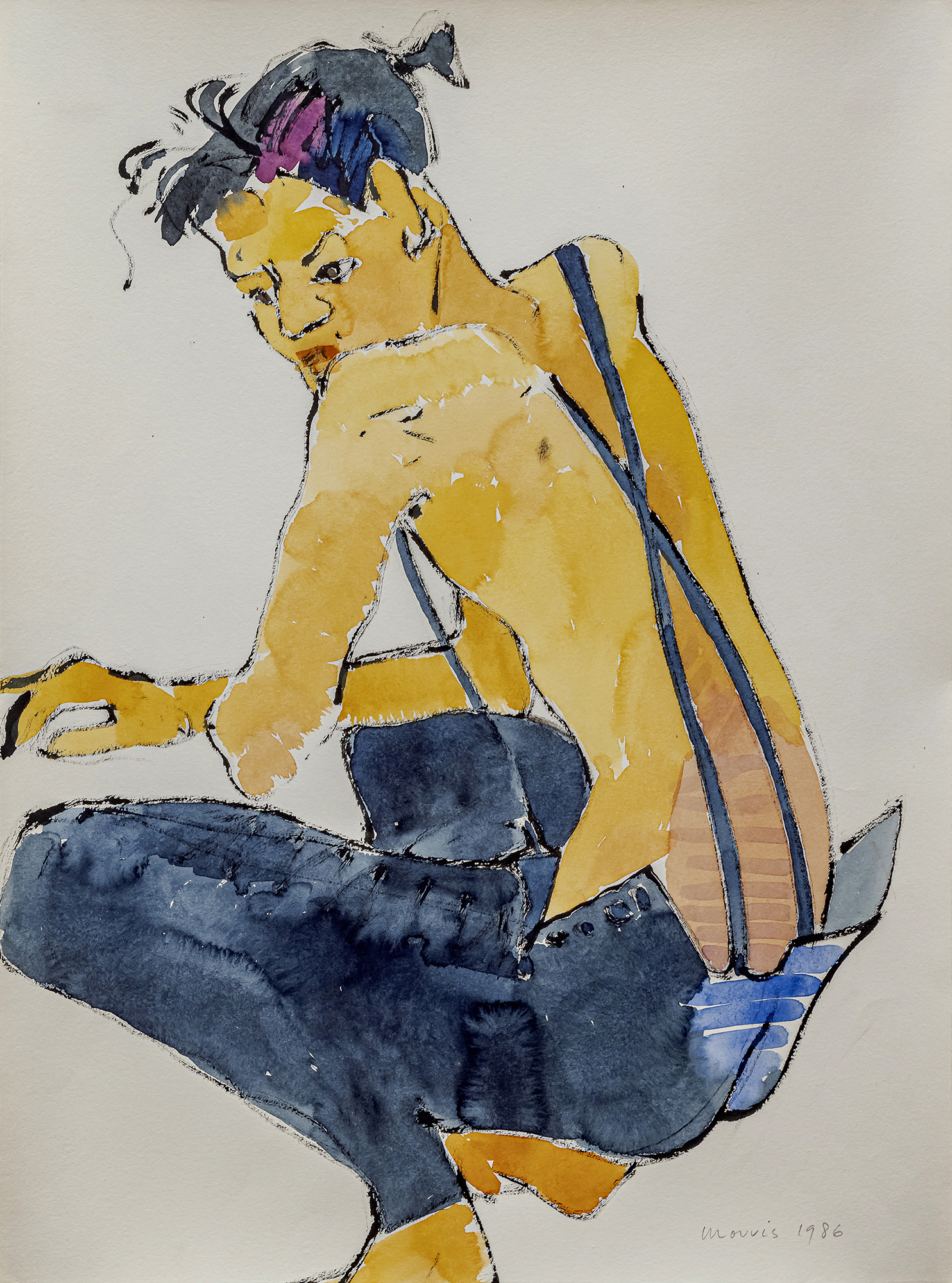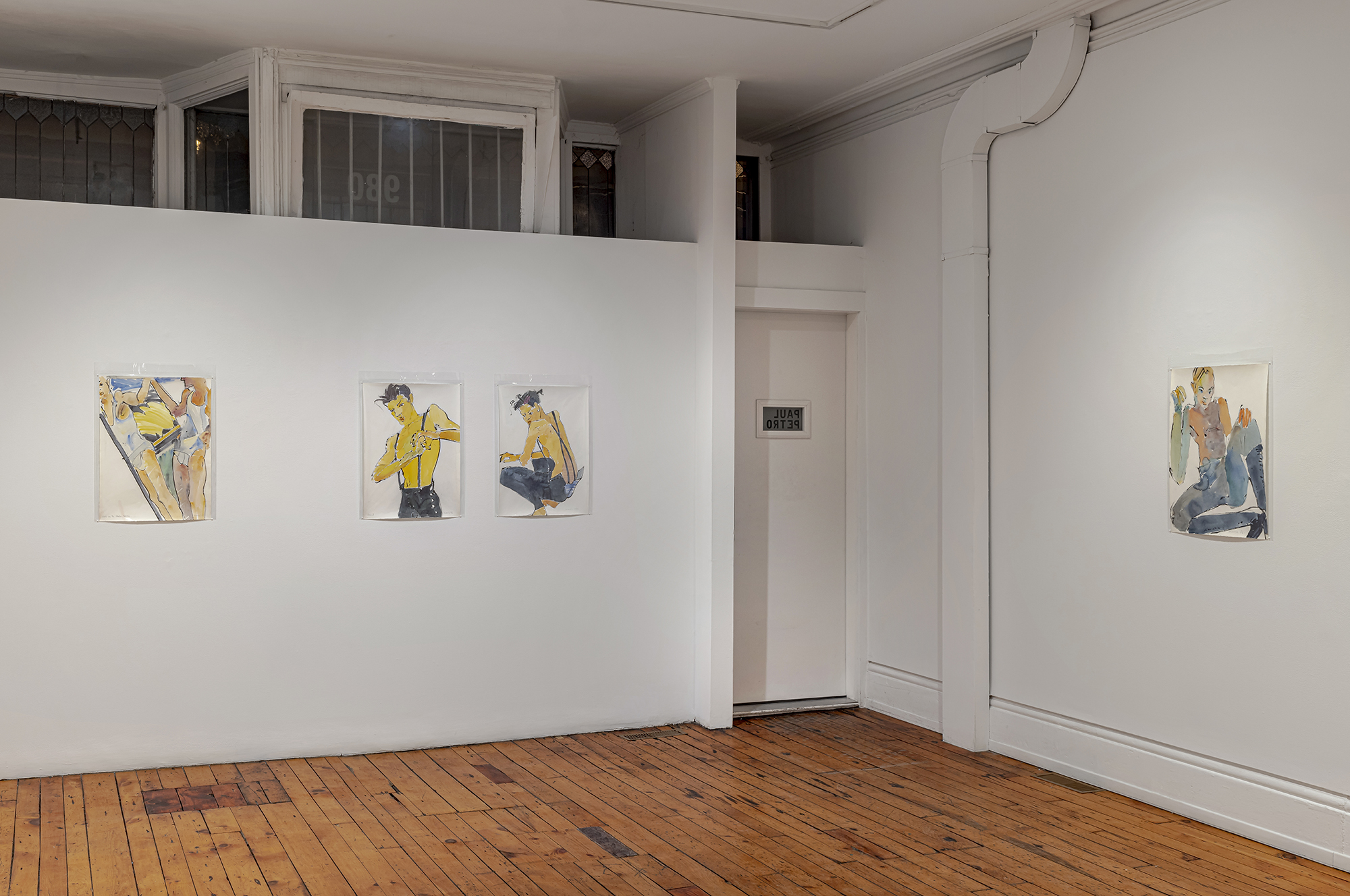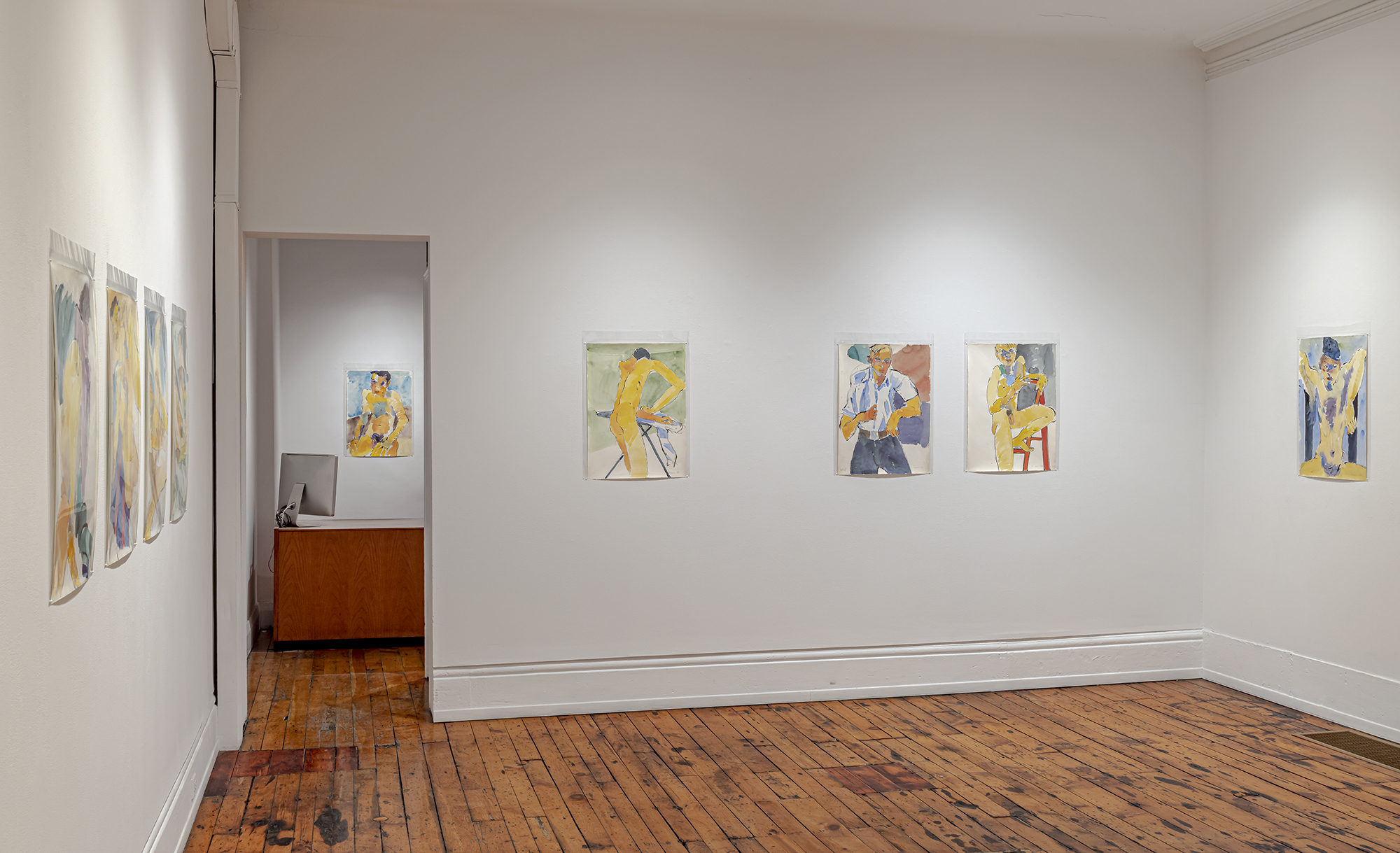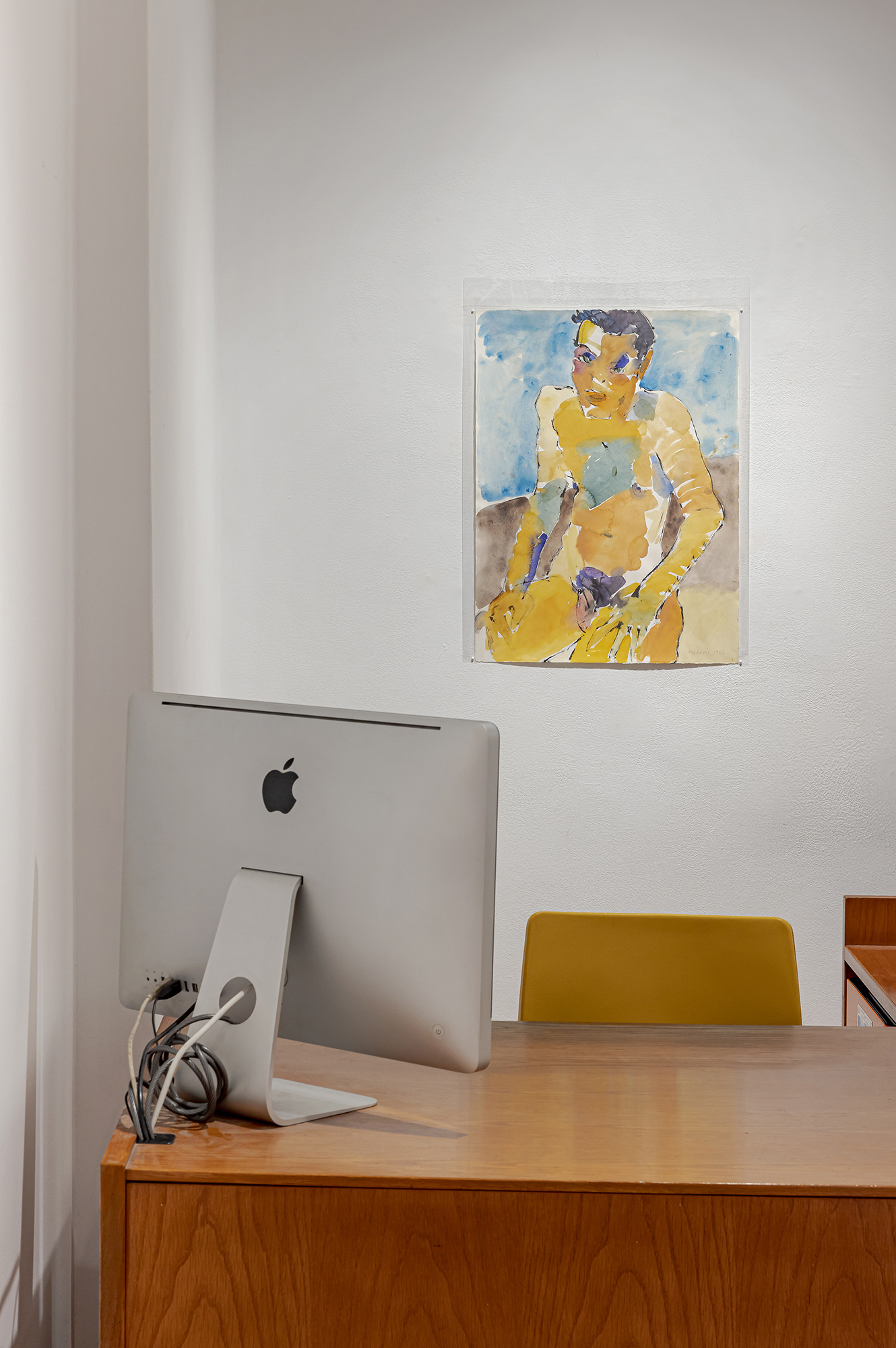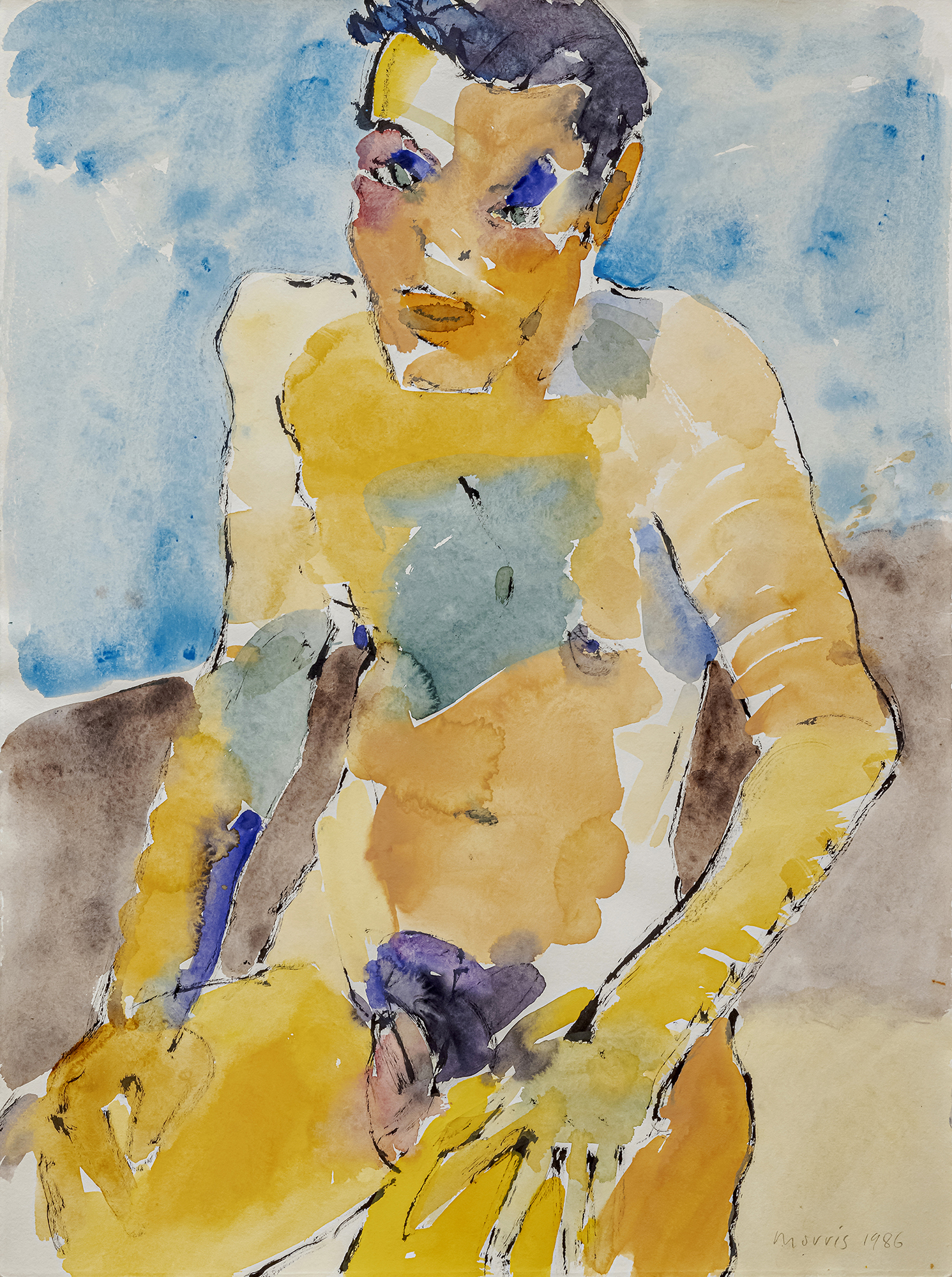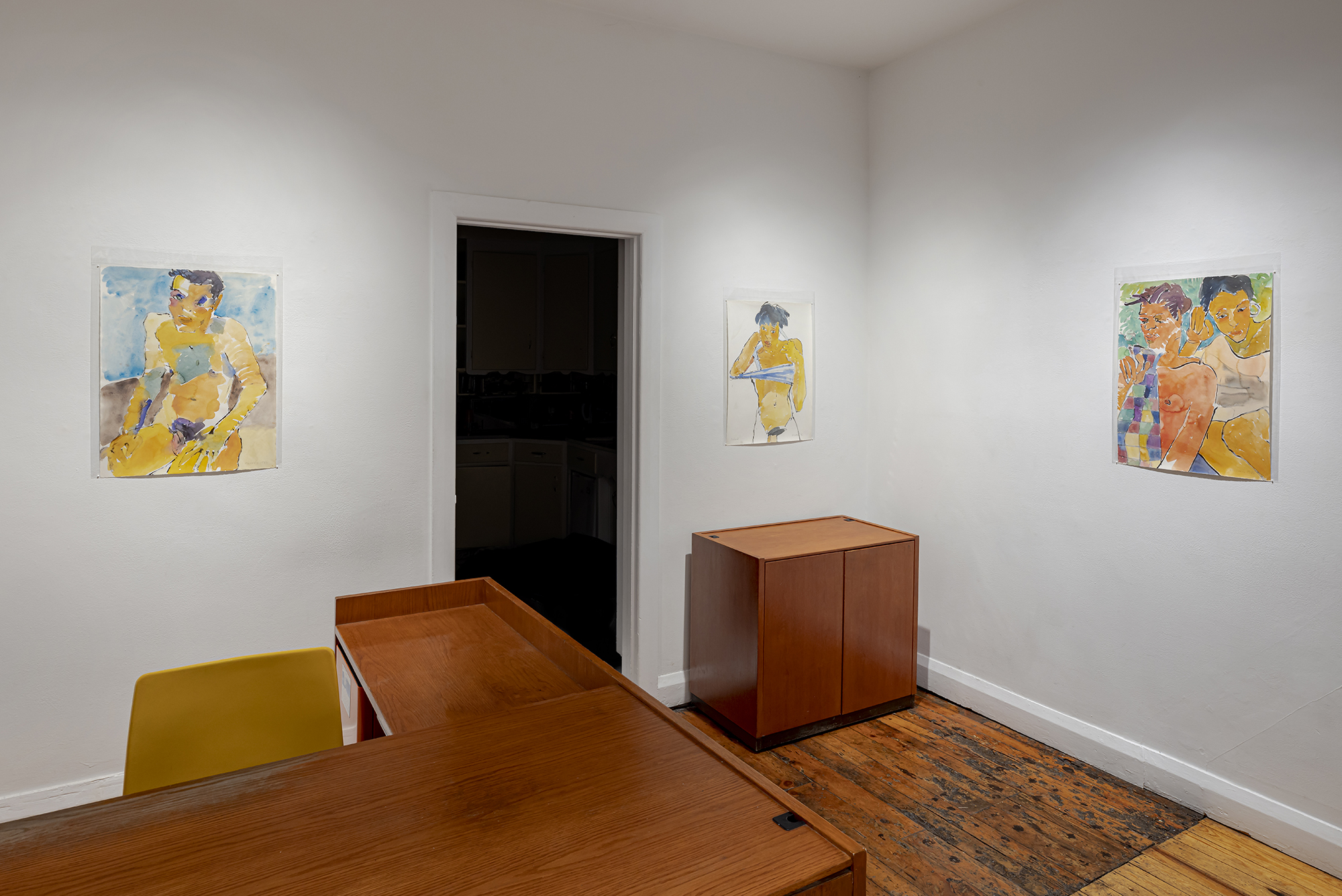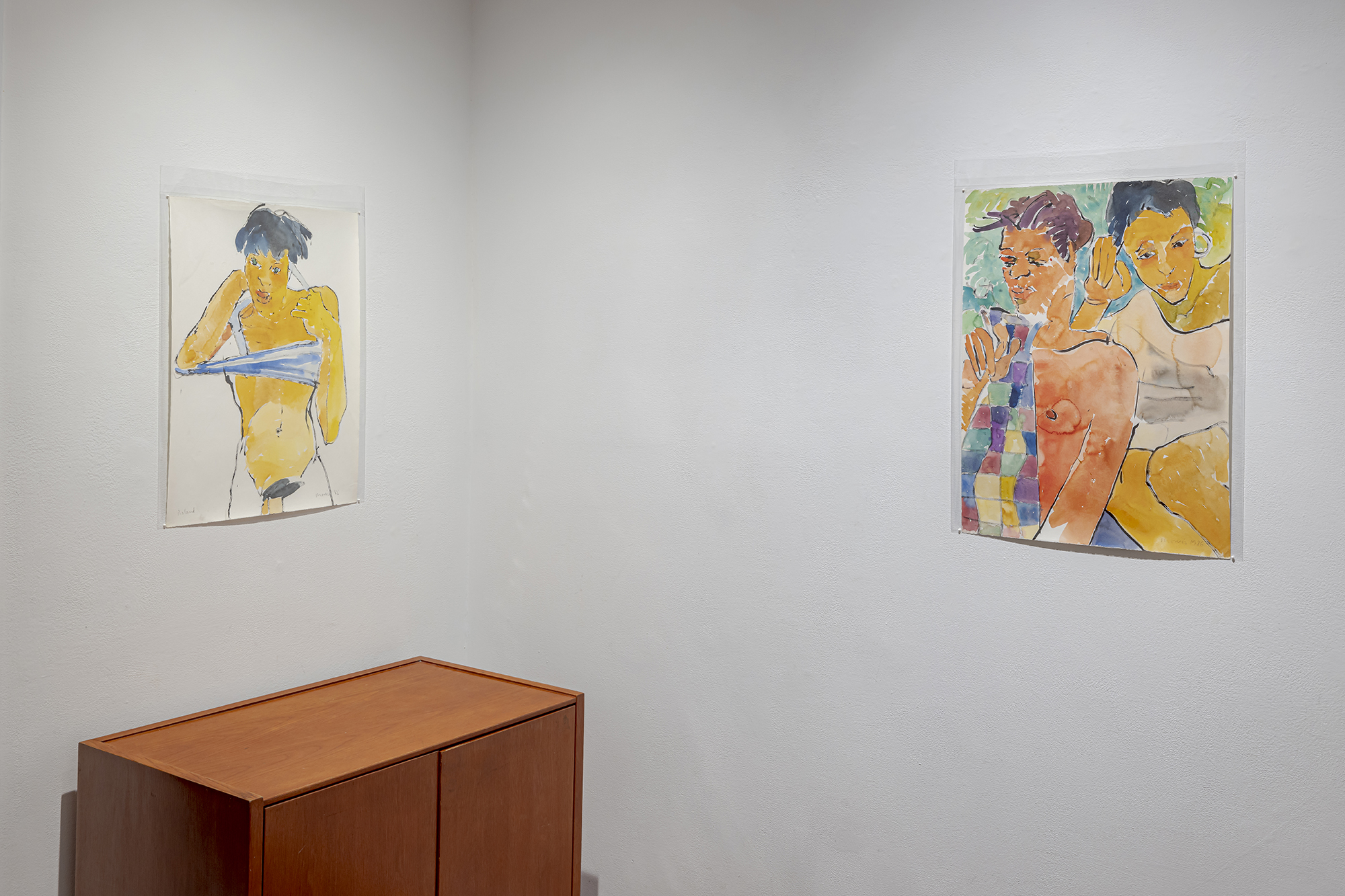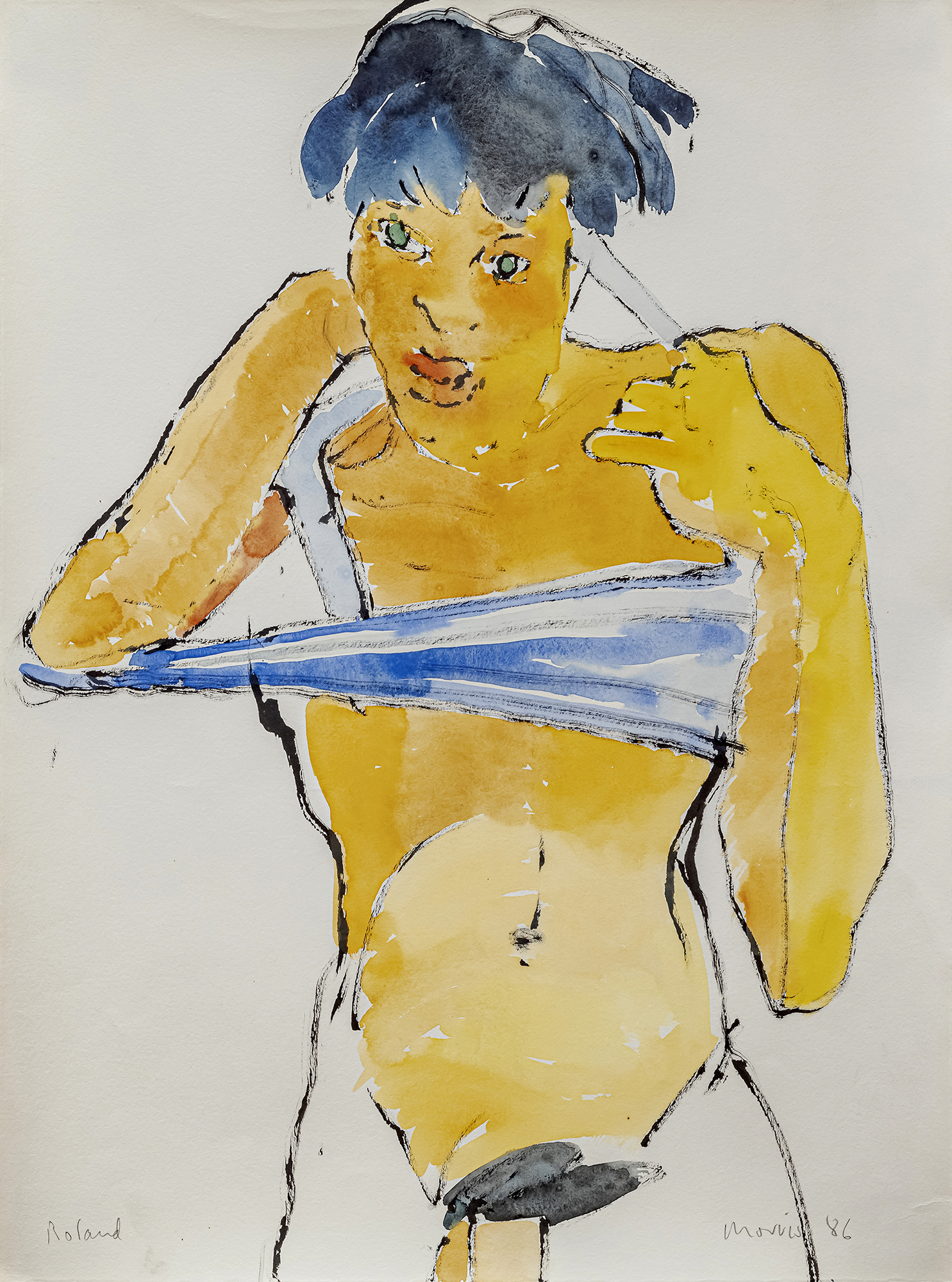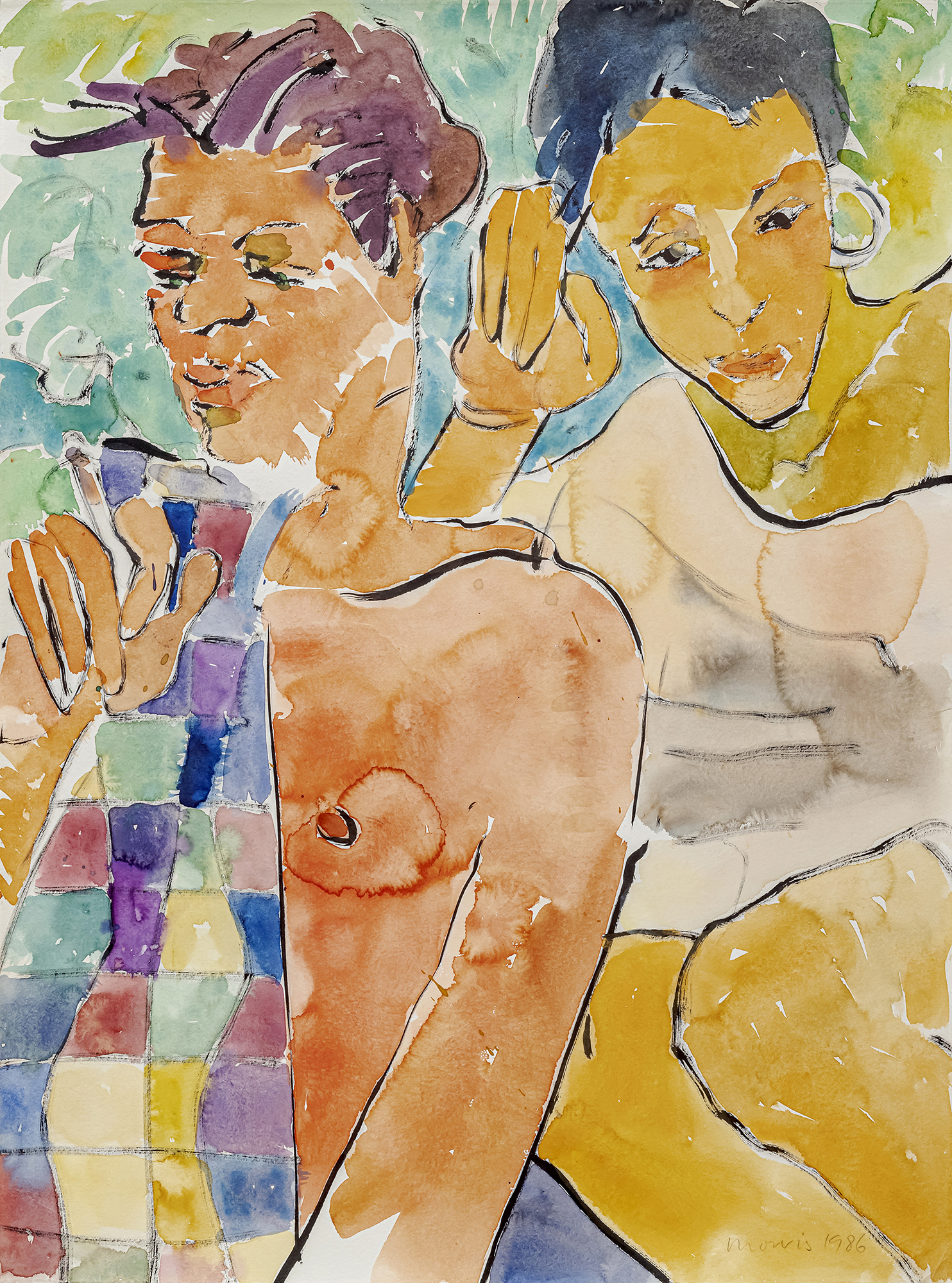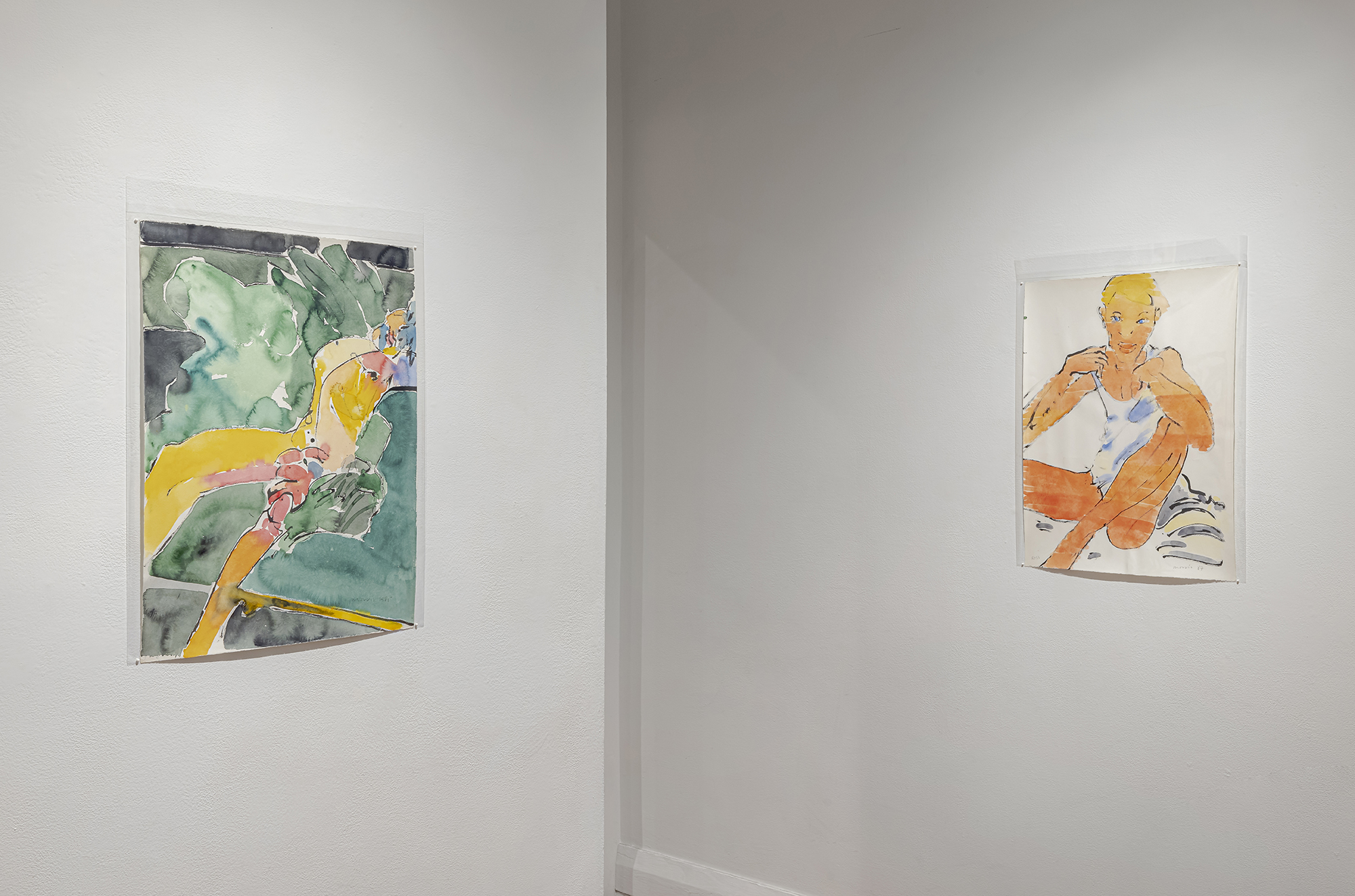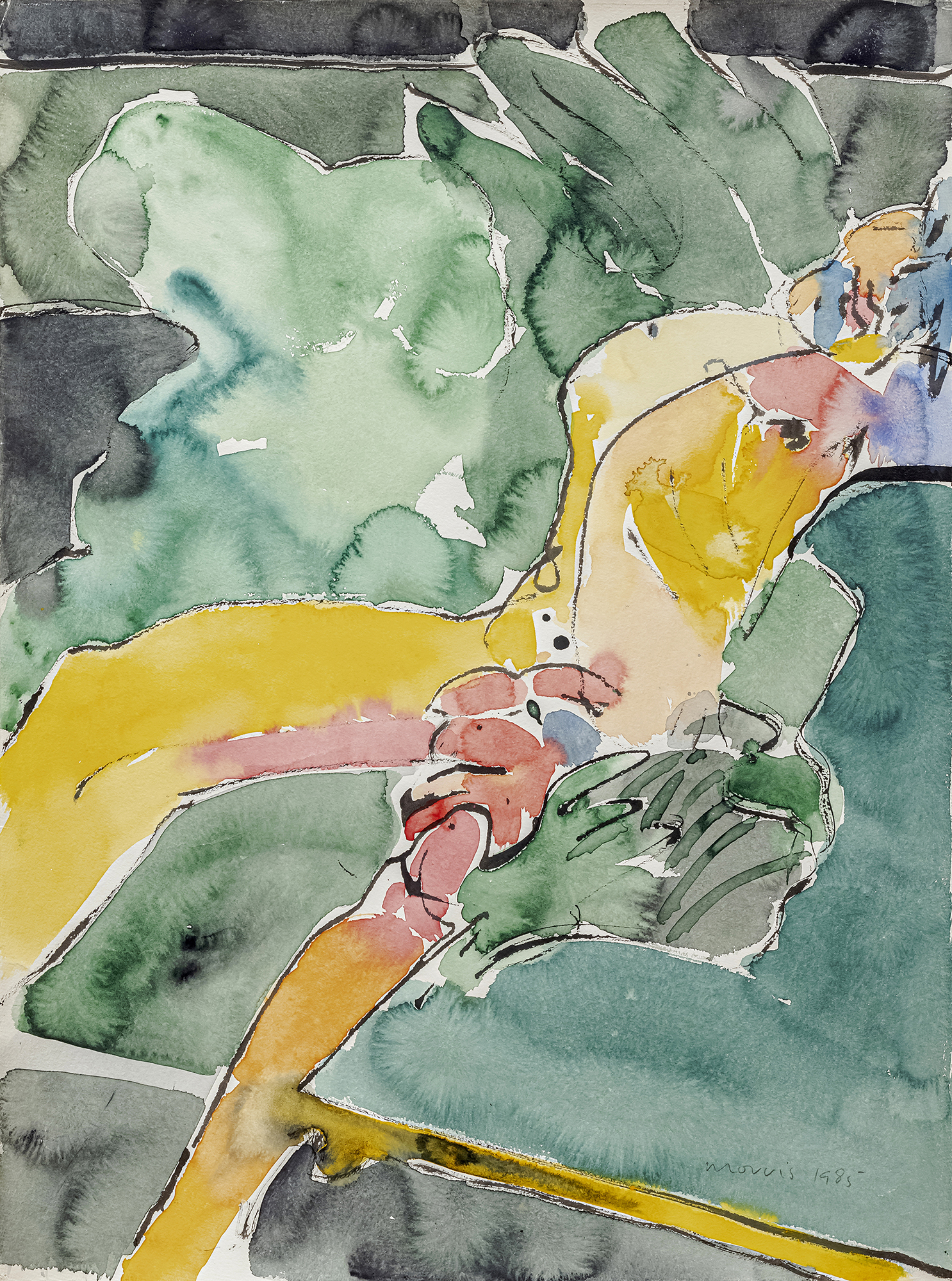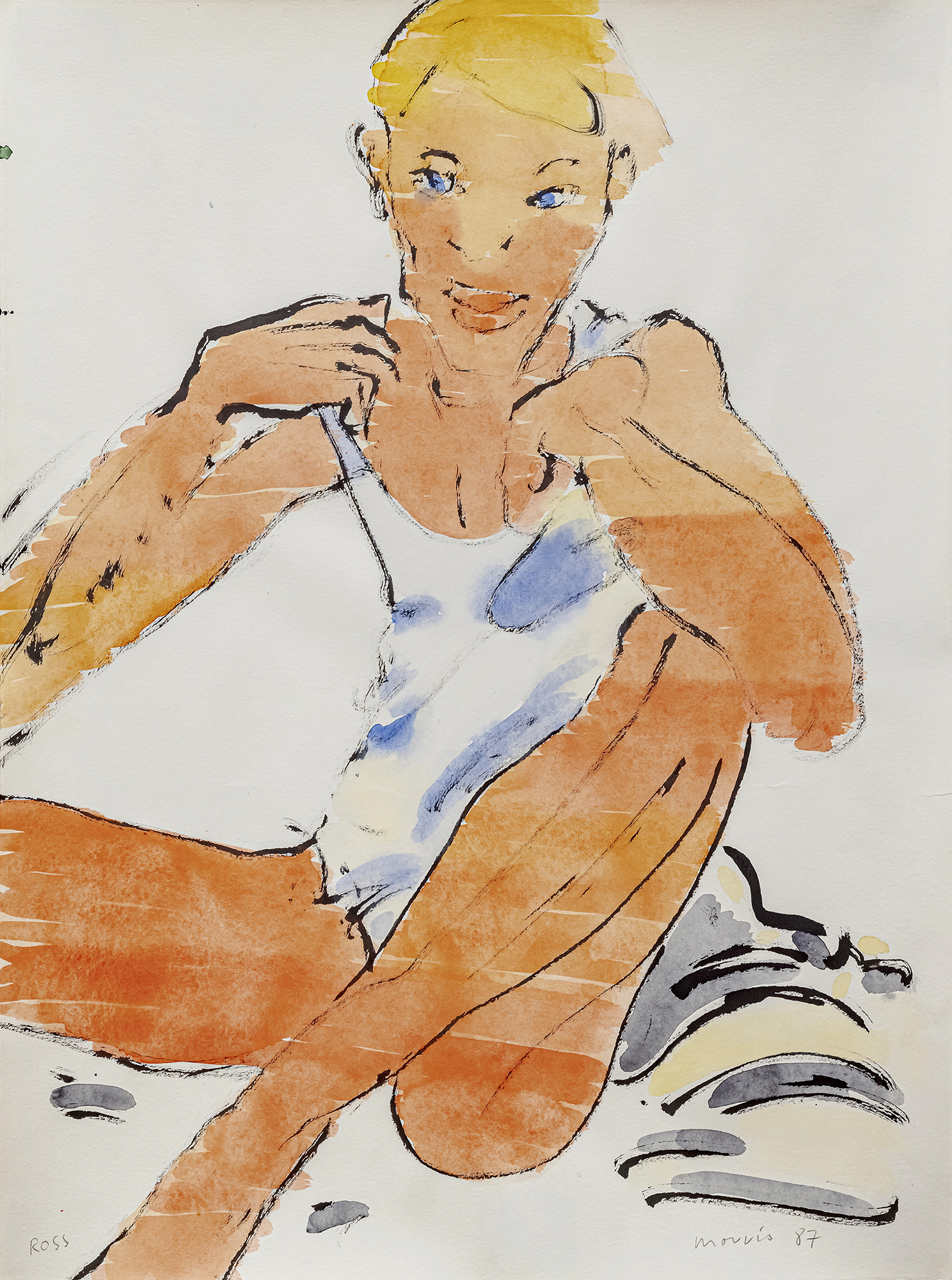Within a dark wood
Michael Morris
In the early days of AIDS - watercolours from 1980s Berlin.
January 14 - February 19, 2022
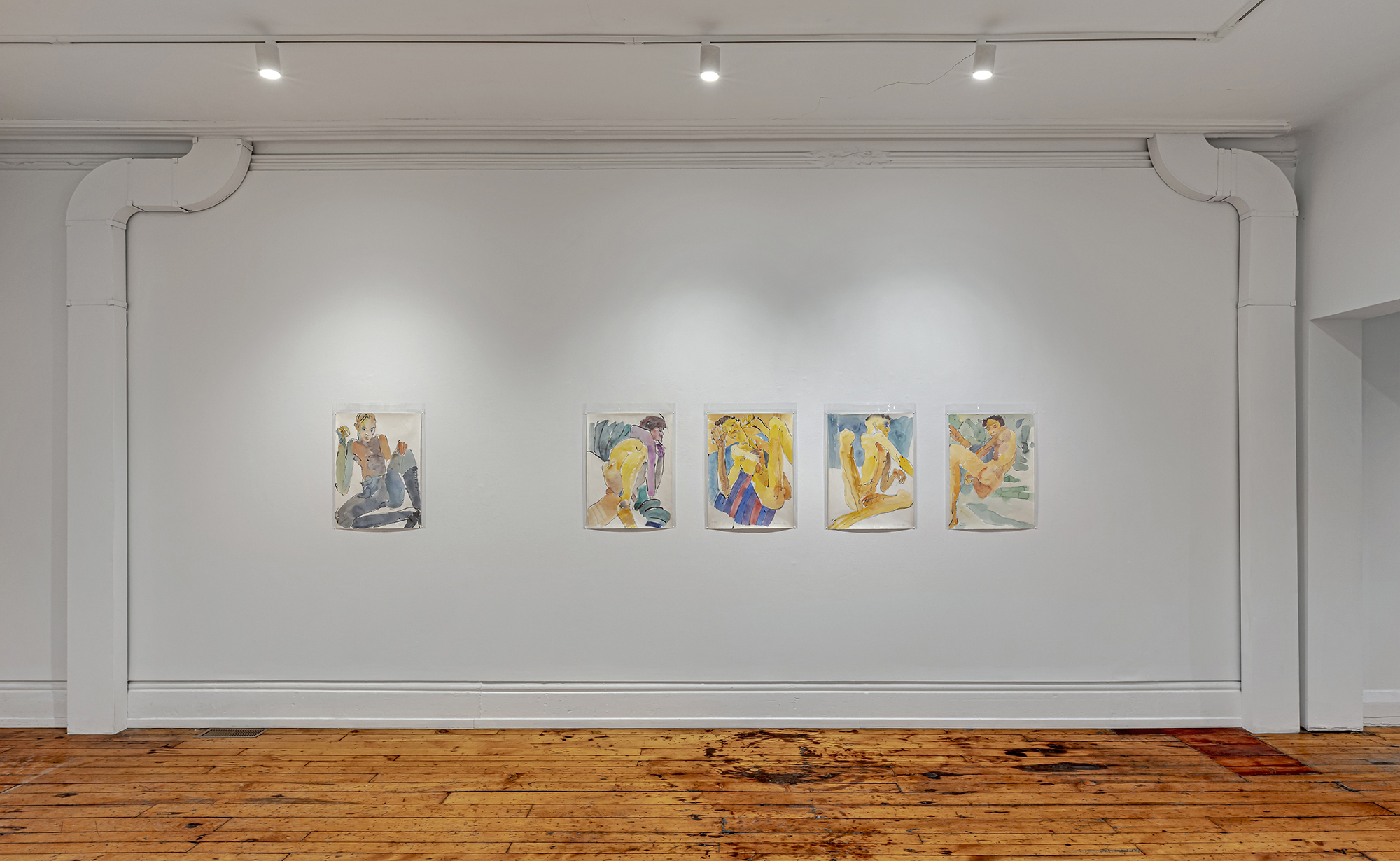
Some of the works have a quotidian feeling, intimate and mundane. Others are intimate as well. The whole series is, really. Part of that has to do with the medium of watercolour and the light deft touch that can readily capture a moment and, in this case, a time. In the early days of AIDS and in a pre-digital world (these works were produced in Berlin, 1985-1987), there was a less mediated innocence and an exuberance, as well as a vulnerability, that Michael Morris was rendering. He was also returning to painting after the years of acclaimed and widely collected work which followed his Slade School time in early sixties London and which preceded his move from Vancouver to Berlin in 1981.
Reconnecting with colour, line and form, and subjects including Berlin hustlers, artists and friends, a body of work was built up. It preceded his return to a hard-edged abstraction by the late 80s, this time in oil and with hand-painted edges and the sort of spiritualism we attribute to Albers, with a noir-ish twist replacing the Pop-inflected abstraction from the late 60s work. Following a whisper in my ear by Greg Curnoe, these watercolours made it back to Canada, along with many paintings from that time, and rested in a print drawer at the gallery for close to thirty years before being brought back out, viewed more thoroughly through the lens of AIDS and HIV, and installed for this exhibition. -- Paul Petro
Some words from Michael Morris:
In 1966, I returned to Canada from my postgraduate studies at the Slade School of Fine Art at University College in London, in time to complete a body of work that became recognized nationally during Canada’s centennial celebrations the following year. Concerned that Canadian art and artists should address a world beyond the parochial, I began a collaboration with Vincent Trasov called Image Bank in which we used the postal service to create international art networks.
In the ’70s, I was one of eight artists in Vancouver who founded the Western Front, a live/work artist centre dedicated to the production and presentation of new art. Collectively we collaborated amongst ourselves as well as nationally and internationally—a tradition that continues to the present day.
I was 38 in 1981 when I arrived in Berlin as a guest of the German Academic Exchange Service (DAAD). Berlin was a strange, dangerous yet enchanted city. The city far from my life in Vancouver allowed me to think about my work and career again.
Sometimes I felt like a hostage in a city divided between East and West and surrounded and divided by a wall. The Cold War gave it a sense of being neglected, and the arrival of AIDS certainly didn’t help the prevailing angst. On the plus side, Berliners were known for being tolerant, and the fact that rents were cheap and everything was highly subsidized meant that the city could provide unique opportunities for artists.
Berlin also attracted young men from across West Germany who were exempt from compulsory military service. My drawings of men celebrating their sexuality became the starting point for going back to the studio and painting. Creatively, there was a definite buzz and a sense that everything was possible. I was inspired by artists like Derek Jarman, whom I’d known at the Slade and who was often in town showing his films like “Caravaggio” and “The Last of England,” and new German friends including the painter Salome, who was a neighbour. I also got to know the young Attila Richard Lukacs from Vancouver, who arrived in 1986 and whose paintings of the queer skinhead scene helped define the era.
Thinking back to those days over 30 years ago, I look at these watercolours with fondness, remembering many of the boys I drew—some with sadness, as they died of AIDS, and some with pleasure, as they are still friends now in their 60s.
Sadly, the AIDS era is not yet behind us. Today, as the world is being rocked by the COVID-19 pandemic and people are obsessed with preventing the transmission of another deadly infection, I hope that my work might form a connection to that other, earlier pandemic, which destroyed so many lives and has yet to finish ravaging its way through our bodies, our world and our culture.
Michael Morris, January 2022
MICHAEL MORRIS was born in 1942 in Saltdean, England and immigrated to Canada at age four. After he graduated with honours from the Vancouver School of Art (now Emily Carr University of Art + Design) in 1964, Morris studied at the Slade School of Fine Art at the University College London. There he absorbed the work of Fluxus and the European avant-garde, artistic developments that had a profound influence on Vancouver’s experimental art scene.
When he returned to Vancouver and established his painting studio, Morris also became a curator at the Vancouver Art Gallery and at the Centre for Communications and the Arts at Simon Fraser University. In 1973, Morris and seven fellow artists (Martin Bartlett, Mo Van Nostrand, Kate Craig, Henry Greenhow, Glenn Lewis, Eric Metcalfe, and Vincent Trasov) co-founded the Western Front — one of Canada’s first artist-run centres — and he served as its co-director for seven years.
The University of British Columbia's Belkin Art Gallery hosted an exhibition of paintings, Letters: Michael Morris and Concrete Poetry, January 13 – April 8, 2012. In 2018 Paul Petro Contemporary Art mounted the exhibition, Toronto Letter - A Concise Colour Bar Survey 1966-2017. In 2018, Amsterdam Kunstverein, Netherlands hosted the exhibition Image Bank, which travelled to the Morris and Helen Belkin Art Gallery, UBC, Vancouver in 2021, where it was acquired. Morris's work was featured in the group exhibition Op Art In Vancouver, Vancouver Art Gallery, October 2020 - April 2021.
Michael Morris was awarded an Honorary Doctorate of Humanities in 2005 by Emily Carr University of Art + Design. In 2011, he received the Governor General’s Award in Visual and Media Arts. In 2015 he received the Audain Prize for the Visual Arts. Works by Michael Morris can be found in public, university and corporate collections across Canada. Morris currently lives and works in Victoria, BC.















































